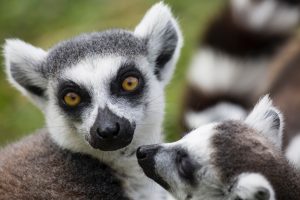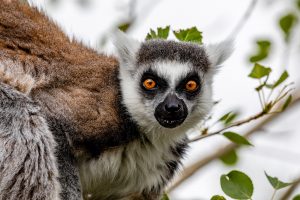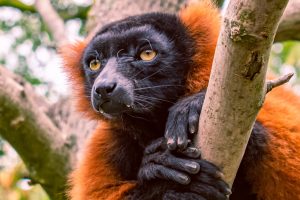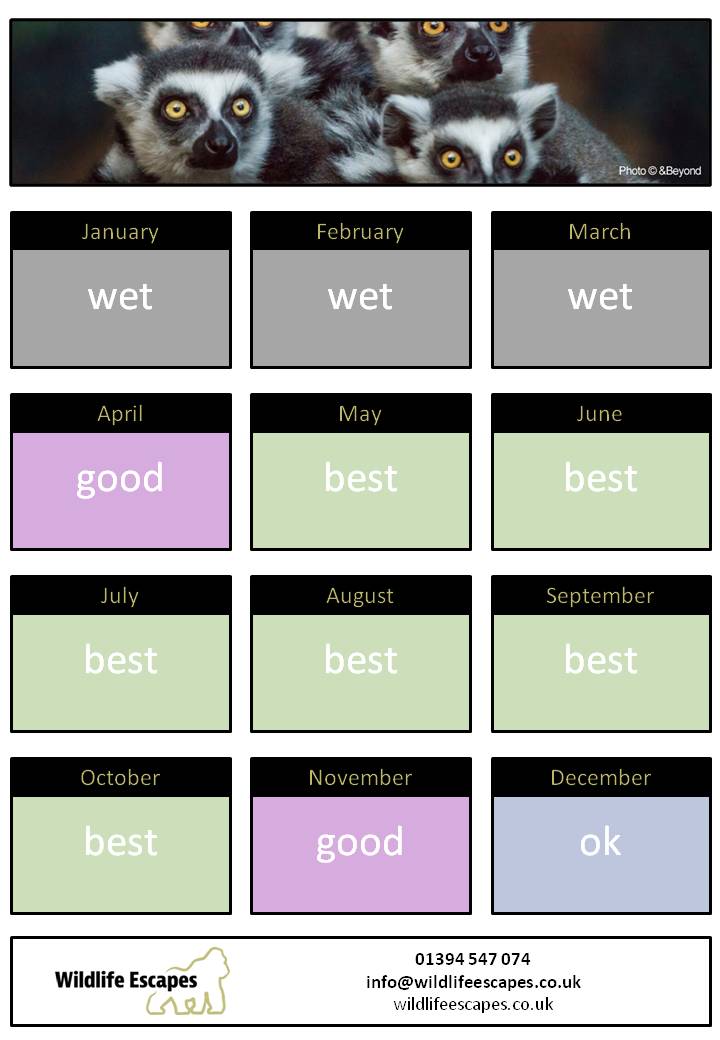Madagascar Itineraries
Ring-tailed lemurs are primates found only on the African island of Madagascar and are unmistakable because of their long, vividly striped, black-and-white tail. These characterful lemurs thrive in Madagascar because there are no other primates that inhabit the island.
These characterful lemurs thrive in Madagascar because there are no other primates that inhabit the island. They are often described as the dancing lemur for the way they move across open ground, but you can also see them lazing in the sun, with their arms stretched out, exposing their bellies to the warmth of the sun.
Madagascar is one of the most diverse and unusual wildlife safari hotspots in the world today. Your safari is mainly by foot, so you will get up close and personal with the Lemurs and all the wildlife you meet along the way.
About the ring-tailed Lemur
The ring-tailed Lemurs are exclusively active in daylight hours. They live in groups of up to 30 individuals. They like to keep warm and are highly social, so can often be seen huddled together in a group (or a troop). It is a female dominant breed, and mothers carry their babies on their fronts for the first couple of weeks, and then on their backs when the babies are a bit stronger. Infants stay with their mothers for around two years. When it grows up the female lemur tends to stay in the troop, whilst the male joins another group.
Disney made King Julien the most famous ring-tailed lemur – and yes you guessed it – he likes to move it, move it!
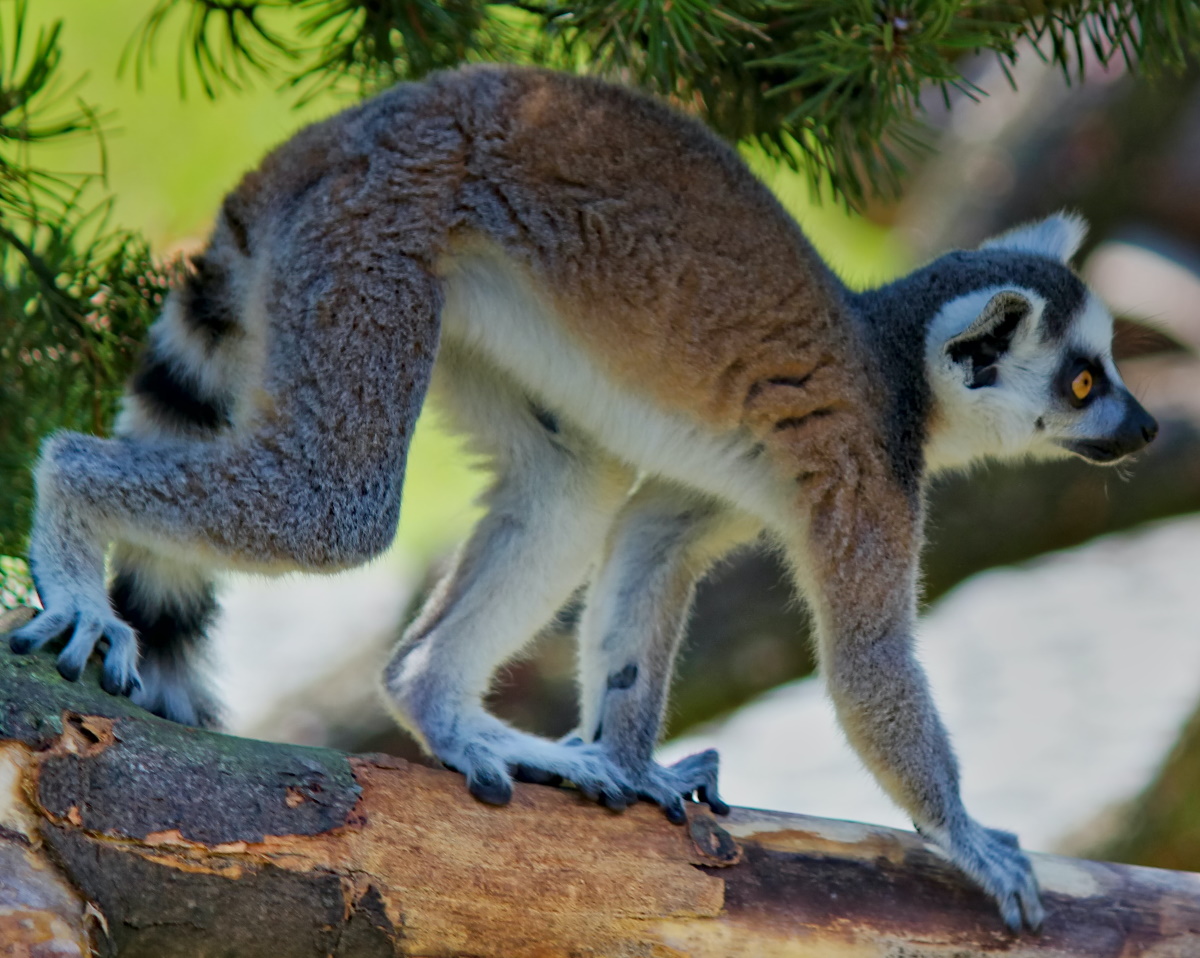
Our Most Popular Madagascar Safari Holidays
We offer an exceptional choice of safari experiences but unlike many countries in Southern Africa you don’t often get the ultra-luxury accommodation here. A Madagascar safari is a unique experience and it is all about the spirit of adventure rather than the high quality, as the standard of the lodges and hotels are fairly modest – some quite rustic. However, there are some top end hotels available at the beach locations of Nosy Be and Ile Sainte Marie which is a great way to finish your holiday off. We recommend that you visit at least two, and preferably three, of its distinct climatic and floral zones to get the most out of Madagascar pristine flora and extra-ordinary wildlife. At Wildlife Escapes we can help point you in the right direction!
Madagascar Holiday Schedules
These itineraries are ones we have arranged for many of our clients and will give you the very best wildlife holiday experiences. Where possible we have included other highlights of the country, to make the most of your precious holiday time, but ultimately everything revolves around the wildlife. However, nothing is cast in stone, as we can tailor-make the perfect wildlife holiday to suit your interests, the time you have, the standard/quality of the accommodation you prefer and of course, your budget. No two people are the same, so we will listen to your individual requirements, find out what your expectations and aspirations are and accordingly make suggestions and recommendations, to give you the most memorable wildlife holiday experience.
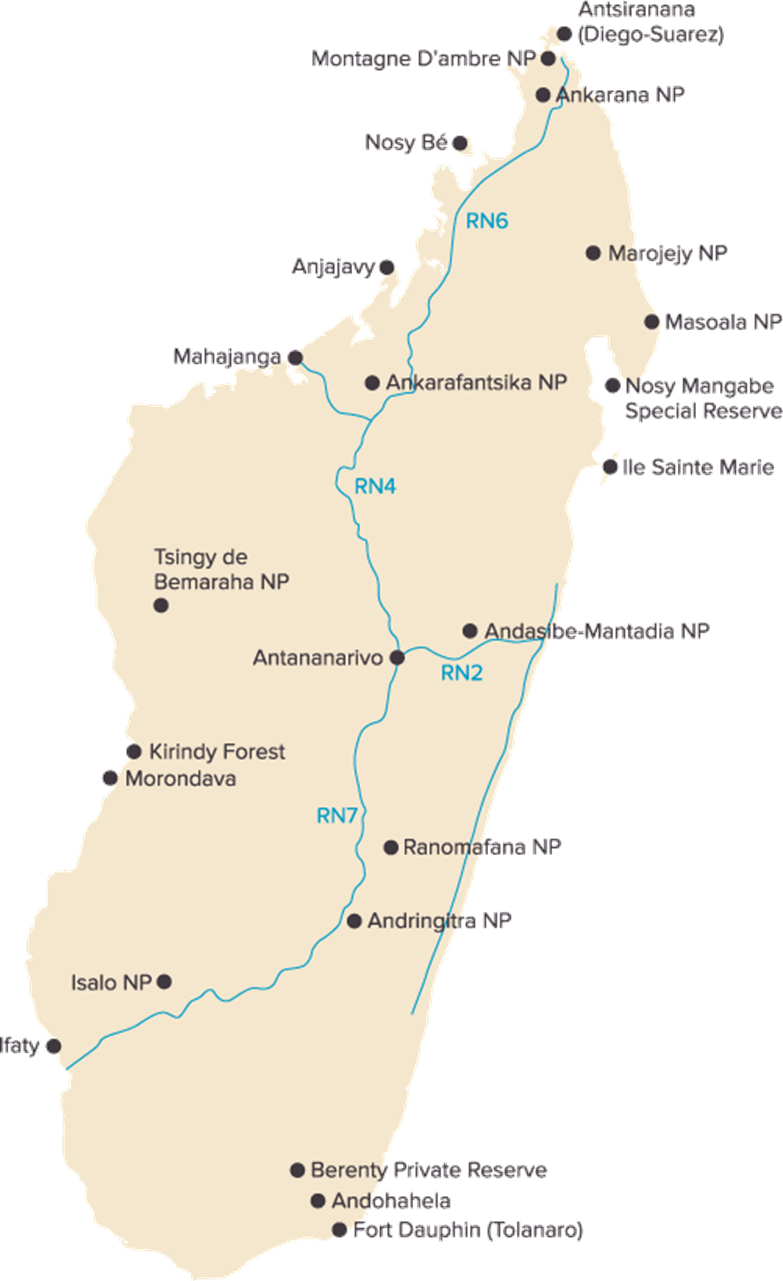 A Typical Madagascar Safari
A Typical Madagascar Safari
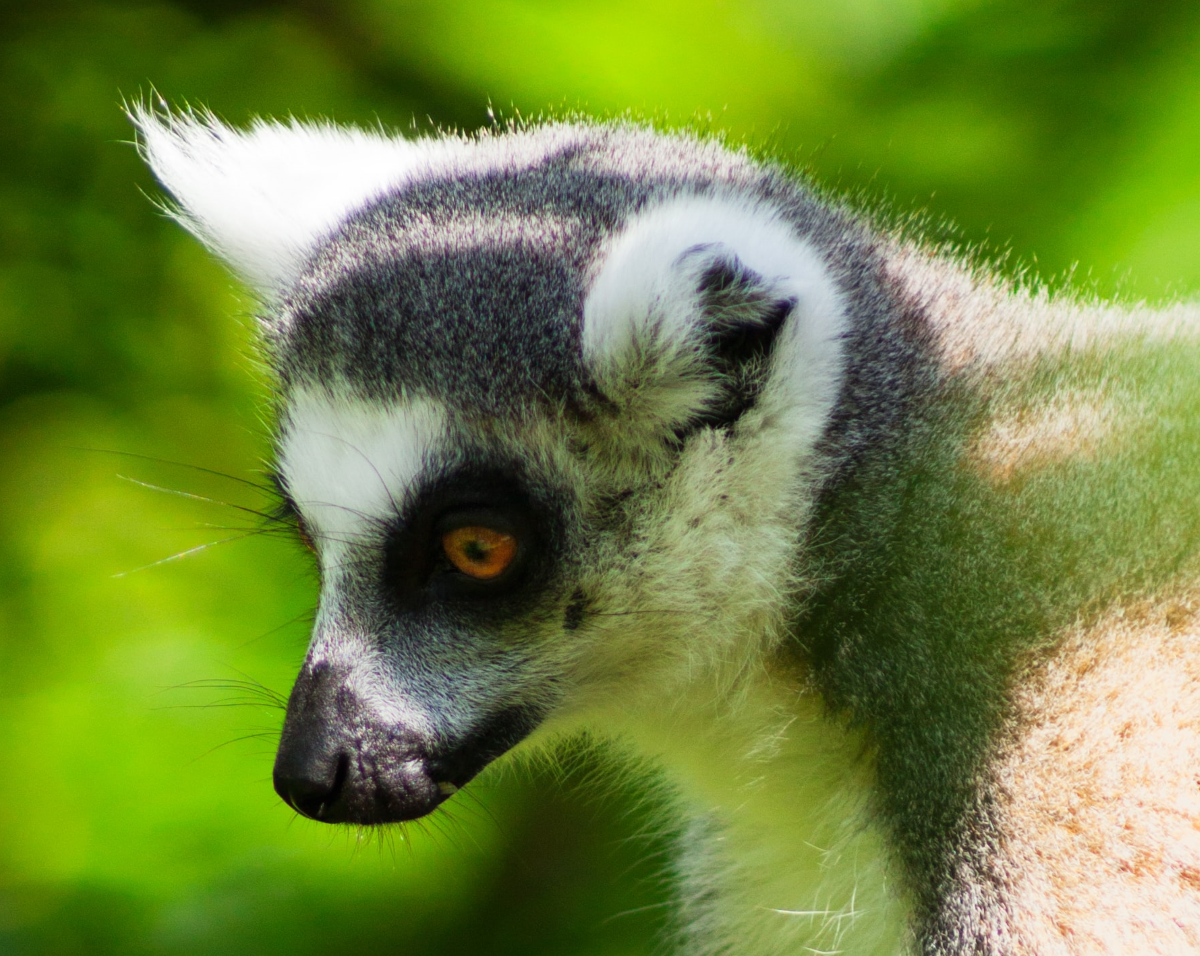
Day 1 Antananarivo
Arrive in Antananarivo, Madagascar’s capital city, perched on top of a mountain range close to several nature reserves, including Tsingy de Bemaraha, with its fantastical limestone spikes. Founded in 1625. Its rich historical heritage is complemented by scenic landscapes traversed with a multitude of hiking routes.
Bed & Breakfast
Day 2 – 4: Andasibe-Mantadia
A place of great beauty and biodiversity, Andasibe-Mantadia National Park stretches across 154 square kilometres. It is divided into two distinct sections – the smaller ‘Perinet’ Reserve to the south and the larger Parc National de Mantadia to the north. The tropical rainforests here are made up of lush ferns, tangled lianas, hundreds of orchid species and myriad other jungle flora all teeming with a diverse array of endemic wildlife. You’ll know you’ve arrived when you hear the peculiar call of the Indri.
Full Board plus Activities
Day 5 – 7: Berenty
Set in southern Madagascar, the Berenty Reserve is a small private forest along the Mandrake River. This reserve is ideal for bird enthusiasts as it attracts a wide range of endemic bird species. The Berenty Reserve has an accommodation establishment set in the forest along with forest trails to discover this region.
Full Board plus Activities
Day 8 – 11: Nosy Be
Nosy Be’s is Madagascar’s most popular tourist destination located off Madagascar’s north western coast but has remained refreshingly unspoilt and free of huge development. This small island is blessed with exquisite sand beaches, glittering volcanic lakes and diverse flora and fauna. It is great for swimming or snorkelling in the calm azure waters and enjoy seafood feasts at oceanfront restaurants. It’s worth paying a visit to the bazaar in Hell-ville or explore the lush rainforests of the Lobeke nature reserve.
Full Board
One of Our Favourite Madagascar Safaris
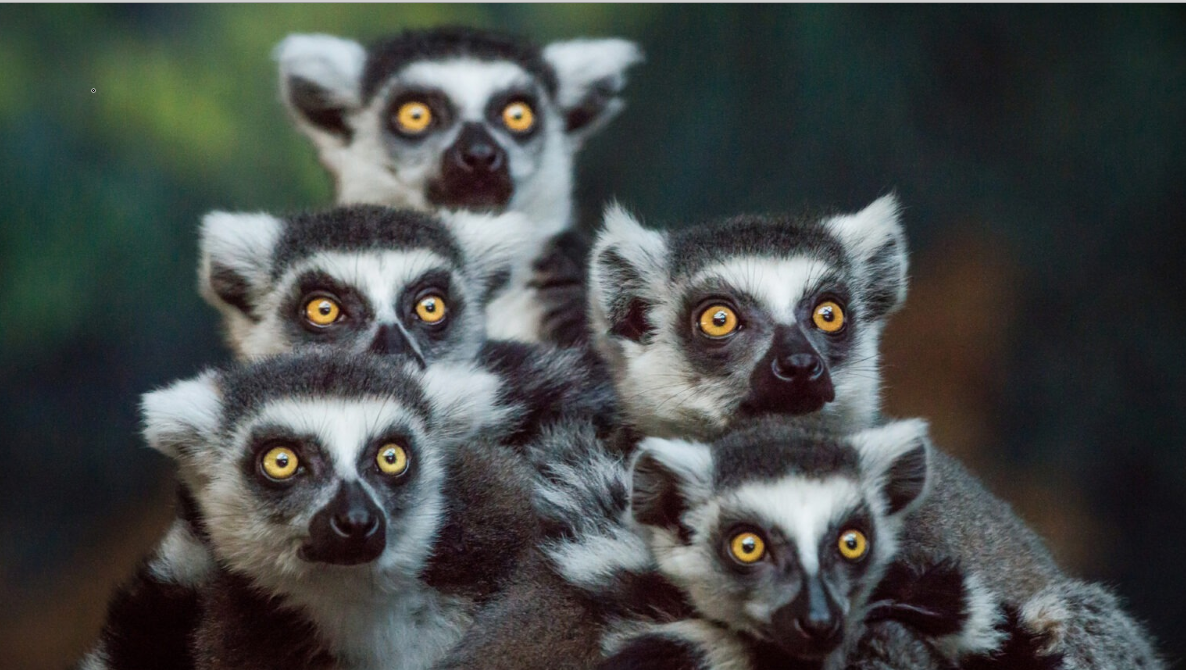
| ACCOMMODATION | DESTINATION | DURATION | BASIS |
|---|---|---|---|
| Overnight Travel | 1 night | ||
| Relais Des Plateaux | Antananarivo | 1 night | HB |
| Vakona Lodge | Andasibe National Park | 2 nights | HB |
| Setam Lodge | Ranomafana | 2 nights | HB |
| Relais Des La Reine | Ranohira | 2 nights | FB |
| Les Dunes | Tulear | 2 night | FB |
| Relais Des Plateaux | Antananarivo | 1 nights | HB |
| Sakatia Lodge | Nosy Be | 3 nights | HB |
| Relais Des Plateaux | Antananarivo | 1 night | HB |
| Overnight Travel | 1 night | ||
| Alternative Accommodation | |||
| Maison Gallieni | Antananarivo | ||
| Mantadia Lodge | Andasibe | 1/2 nights | HB |
| Plumeria Hotel | Andasibe | 1/2 nights | HB |
| Relais du Kirindy | Kirindy Reserve | 1/2 nights | HB |
| Manga Soa Lodge | Nosy Be | 5 nights | HB |
| Miavana | Nosy Ankao | 5 nights | HB |
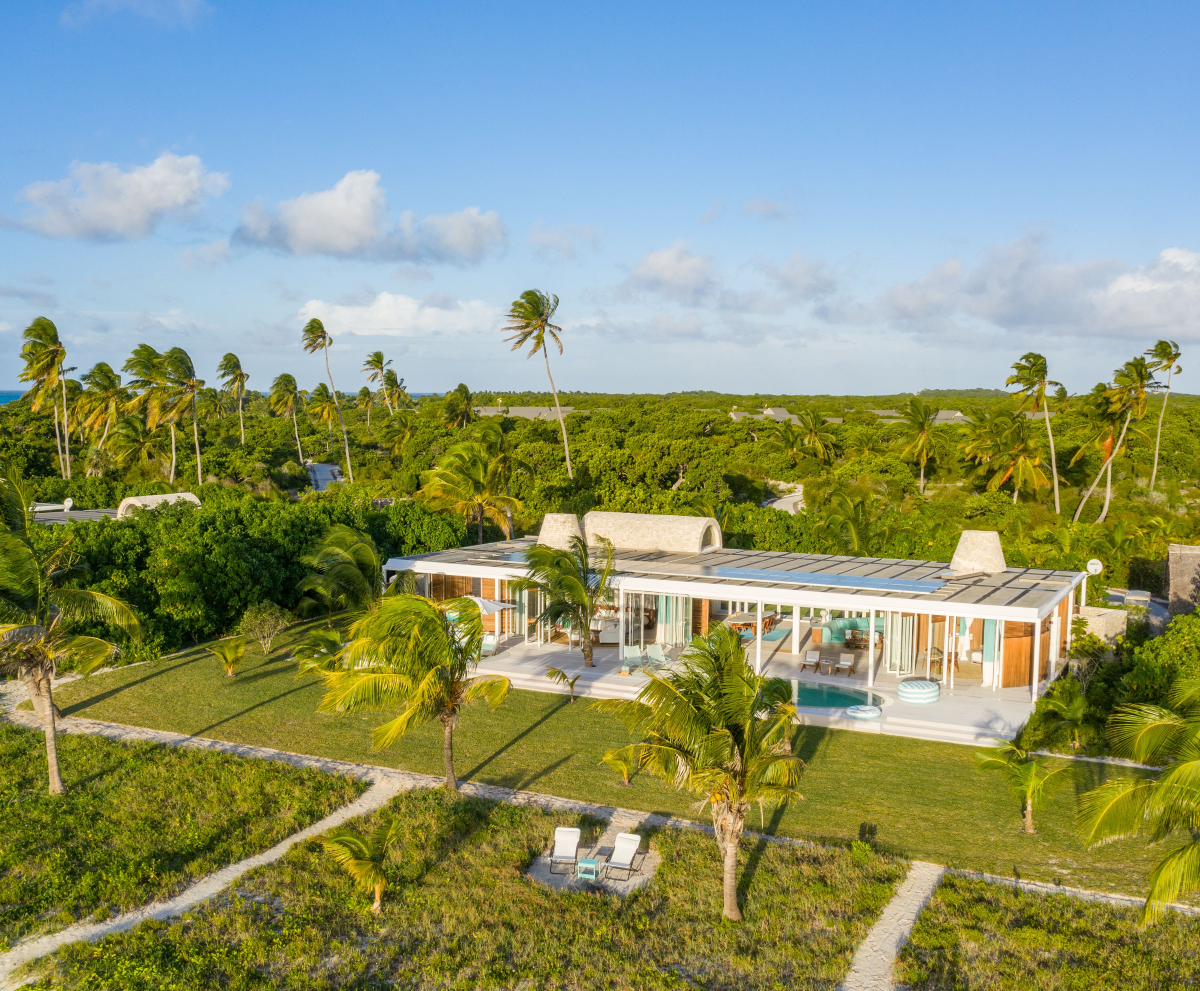
Day 1
Upon arrival you will met by your private driver and guide from our local representatives who will transfer you to the Relais Des Plateaux for one night in one double room on bed and breakfast basis. Relais Des Plateaux only a 10 minute drive from the airport, ideal at this time of night.
Relais Des Plateaux
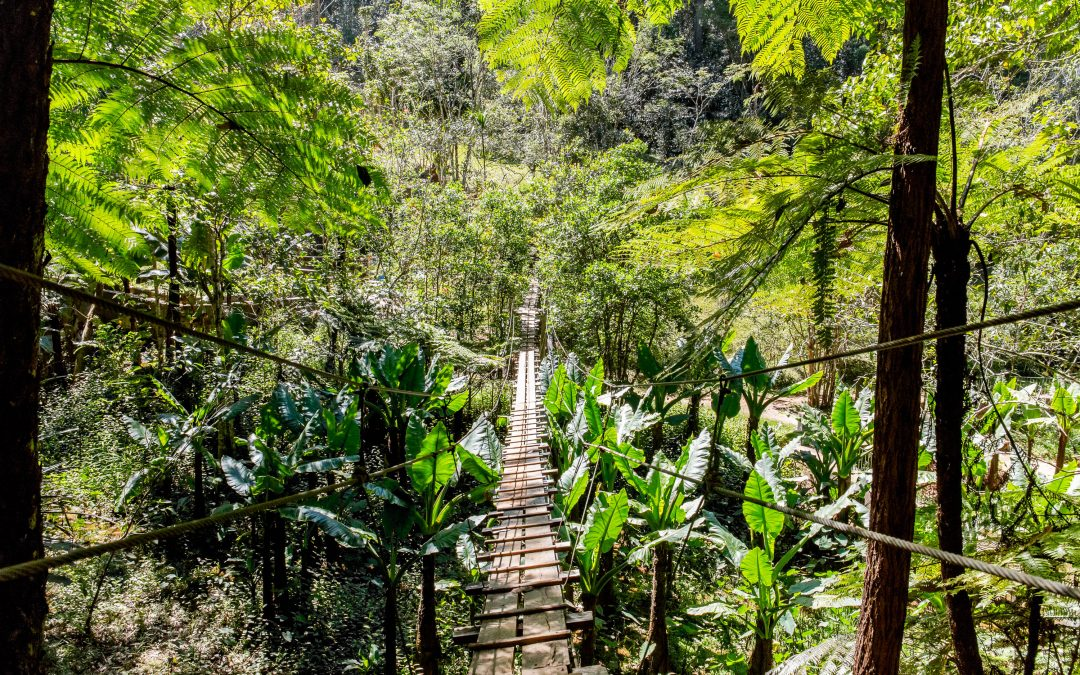
Day 2
After breakfast you will depart with your private driver and guide for the 3 hour drive east to the montane rainforest of Perinet (Andasibe-Mantadia National Park). Here, you will stay 2 nights at Vakona Lodge in one double room with dinner and breakfast included.
Day 3
Spend today exploring Perinet with your guide for diurnal rainforest wildlife. Look out for the famous Indri-Indri and hear its ‘whale-like’ calls in the early mornings. You will also search for common brown lemurs and tiny chameleons as small as your fingernail.
You may also wish to take a guided night walk in the rainforest across the road, under the care of Association Mitsinjo. Here you can seek nocturnal wildlife including various lemurs, chameleons and geckoes including the amazing Fringed (Uroplatus) gecko.
Lemur island at Vakona Lodge, you can get an up-close and personal experience with many species of lemur native to these rainforests. These lemurs have been released from captivity therefore are extremely friendly and pose a great opportunity for photographs.
You may wish on one day to visit Mantadia National Park. Explore the primary rainforest of Mantadia National Park to seek Diademed sifaka, Black-and-white ruffed lemurs, the insectivorous tenrecs and the rainforest-dependent ground rollers. You may wish to take a picnic lunch and eat it beside a waterfall.
Vakona Lodge
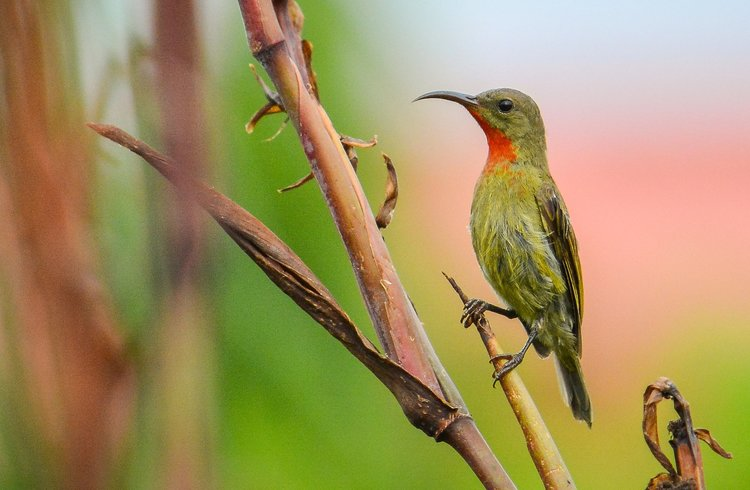
Day 4
After a morning spent in the rainforest, you will drive back to the capital and then southwards to Antsirabe. Antsirabe is a small town roughly halfway between Antananarivo and Ranomafana. You will drive through the typical landscape of the highlands – rice fields, villages of the Merina tribe and rocky hills. Spend the afternoon exploring town with your guide. Antsirabe is the industrial and agricultural centre of Madagascar, with a cool climate that allows it to produce fruits such as pears, plums and apples. The town is well known as well on precious and semi-precious stones and it is also home to the beer production in the country.
Overnight Couleur Cafe with dinner and breakfast included.
Day 5
This morning you will depart Antsirabe and continue onto Ambositra the capital of the Malagasy handicrafts. Visit of different handicrafts shops then if you wish take lunch in a local restaurant (at your own cost).
In the afternoon, continue onto Ranomafana. You will be leaving the highland and heading to the southeastern part of Madagascar crossing into the area of the Tanala tribe. Arrive Ranomafana late afternoon and settle in for 2 nights at Setam Lodge with dinner and breakfast included.
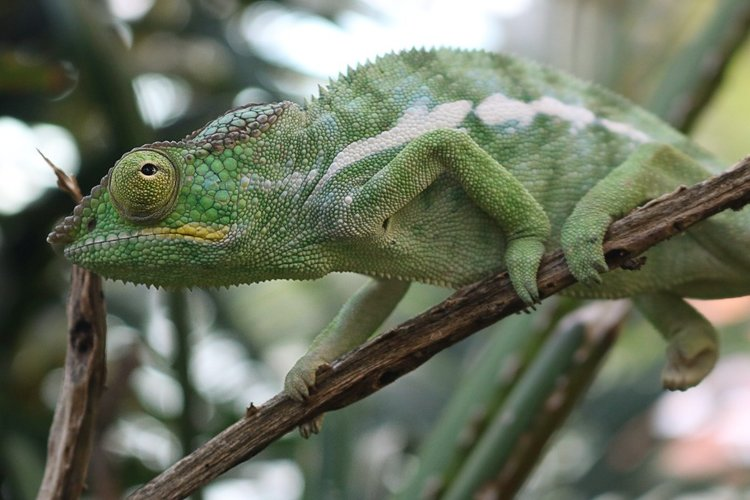
Day 6
Spend a full day with the park guides exploring the Ranomafana National Park.
Ranomafana is a mid-altitude rainforest in the south-eastern part of the island, around 400 kilometres south of Antananarivo and a 7-hour journey by road. The park was originally created in 1991 to protect the golden bamboo lemur discovered there and is extremely rich in wildlife. It is also home to a wide variety of rare and endemic plant species and can claim over 100 species of birds along with many butterflies, chameleons, geckos and insects.
Historically, people were attracted to Ranomafana due to its thermal baths, but now most visitors are attracted by its 12 species of Lemur – Milne-Edwards sifaka, black and white ruffed lemur, three species of bamboo lemur, red-fronted brown lemur, red-bellied lemur, and more often at night the woolly lemur, sportive lemur, greater dwarf lemur, mouse lemur and, if lucky, the aye-aye. Endemic birds in the park include – ground rollers, vangas, couas, brown mesite and coukoo rollers.
Setam Lodge with dinner and breakfast included.
Day 7
Depart Ranomafana after an early breakfast. Continue southward to the highlands reaching the town of Fianarantsoa, which is the capital of the Betsileo. Continue onto Ambalavao and in the afternoon, enjoy the visit of the Anja private reserve where you’ll have the opportunity of observing closely the Ring tailed lemur, endemic birds and reptiles.
Continue to Ranohira. There will be lots of different and interesting photo stops on the way: the south gate, the bishops hat, the Horombe table land. Arrival in Ranohira by the end of the afternoon and settle in at nearby Relais Des La Reine for 2 nights with dinner and breakfast included.
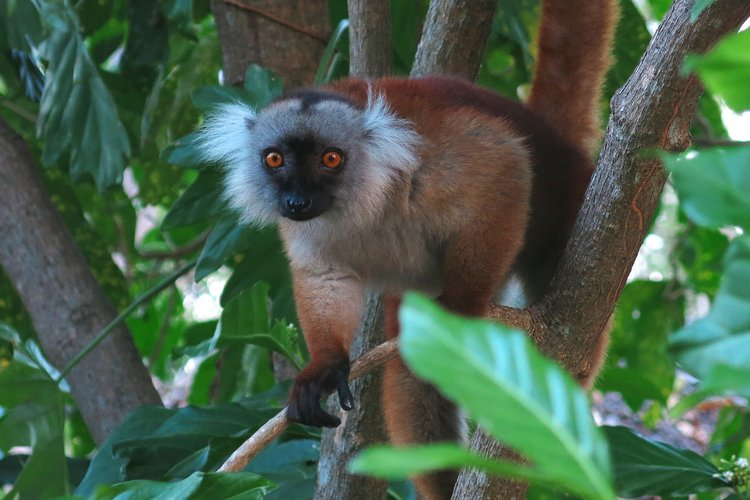
Day 8
Spend the day exploring Isalo National Park with your guide.
Isalo National Park is located 4 hours north along the RN7 and is a quite remarkable national park, with spectacular sandstone rock formations, rare endemic plants and diverse landscapes, making it an extremely popular choice for visitors.
The park is a superb option for hikers and walkers, although due to the terrain and hot weather (rain is virtually unknown from June-September), walks should not be taken lightly. The trails are often rewarded with a cool dip or shower in various deep pools or waterfalls. Short walks of around an hour or multi day treks are all possible.
Isalo is also a sacred area for the local Bara tribe and the caves there have been often used as burial sites. Although mainly known for hiking, Isalo also has some wonderful wildlife with sifakas, brown lemurs and ringtails all present. There are also over 80 bird species and a large number of reptiles and frogs.
Take a walk to the famous Piscine Naturelle through the beautiful landscape of Isalo National Park and see the endemic plants such as the Aloes, Pachypodium, Kalanchoes and Tapia trees. Spend time at the pool then back to the hotel to relax, or if you wish visit the Maison de I’Isalo, a museum well worth a visit to learn more about the local people and wildlife.
On one of the afternoons head for an early evening visit to Le Fenetre, a natural rock formation which beautifully frames the setting sun. Return to the hotel for dinner.
Relais Des La Reine
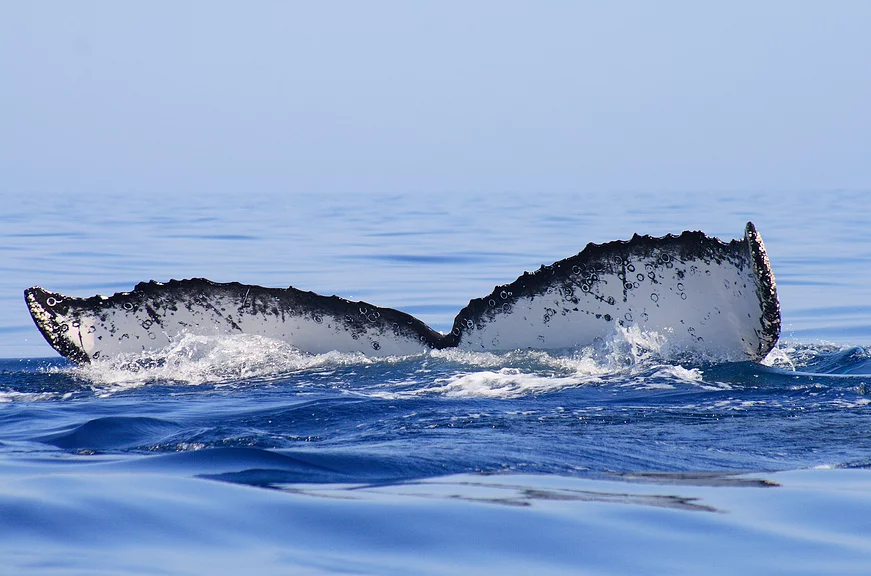
Day 9
Today you will depart Isalo and head to Tulear which should take 4 hours on a tarmac road. On the journey southward to Tulear you will pass through different villages of the sapphire miners. The landscape changes into savannah and bushes. Well painted tombs of the southern tribes as well can be discovered along the road. You may also wish to visit the Zombitse forest en-route home to many endemic birds.
Arrive Tulear mid-afternoon and head north to Ifaty to settle in a Les Dunes for two nights with dinner and breakfast included.
Day 10
Day at leisure or exploring locally.
An hour and a half north of Tulear (at the southern end of the RN7) is Ifaty, which offers sea, sand, snorkelling, birdlife and also baobabs. It is an ideal spot to relax after the long journey down the RN7 and not only can people relax, but various activities can be organised from the accommodation on the coastline.
The main attractions on the beach include diving, snorkelling and visiting local turtle breeding and conservation programmes. The Reniala forest protects spiny forest and offers 1-2 hour trails which are rewarding for birders and those wishing to see baobabs as it has over 1,000 of them, some being 12m in circumference and over 1,200 years old.
This area of the country is one of the poorest and the forests nearby have been severely under threat. Reefdoctors, a local NGO, works to educate the local community and tourists on sustainable practices and their work can be visited at Ifaty.
Les Dunes
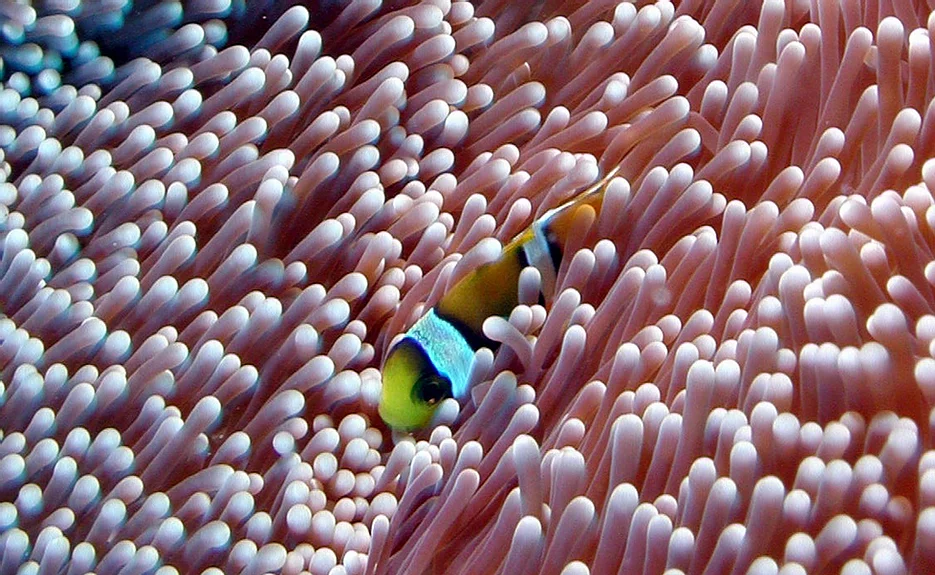
Day 11
Early afternoon you will transfer back to Tulear. Upon your arrival you will transfer straight to the airport for your Air Madagascar flight to Antananarivo. (schedule at present – MD719 – 18h55-20h35).
Upon arrival in Antananarivo you will be met and transferred to Royal Pallisendre Hotel and Spa for overnight on bed and breakfast basis. Spend time relaxing by the pool or at the spa. Alternatively today or in the morning you may have the chance to explore the city if you wish. This will depend on the timing of your internal flights.
If time allows today you may wish to explore the capital with your guide. The capital of Madagascar Antananarivo or ‘Tana’ is itself as diverse as the rest of the country. Set on a group of a dozen hills it is full of colourful houses, grand churches, long avenues and narrow winding streets. The various houses and buildings dotted on the hilltops overlook large areas of empty countryside and vast paddy fields. Although most people will not want to spend too much time in the city during their trip, it is well worth a night or two and most itineraries require a couple of nights due to the international and internal flight schedules. In this time a visit to view the Queens Palace, the artefacts at the Prime Minister’s Palace, the handicraft markets and the UNESCO world heritage site of Ambohimanga – the rest and relaxation place of various past kings and queens – are all well worth doing. Although the capital has all the hustle and bustle like most African capitals it has a certain charm and unique quality that makes it unlike anywhere else.
Royal Palissendre Hotel & Spa
Day 12
Today you will be transferred to Antananarivo airport to check in at for the Air Madagascar flight to Nosy Be. (schedule at present – MD320 – 17h00-18h35) . On arrival you will be met and transferred to Sakatia Lodge. Stay for 3 nights in one double room with dinner and breakfast included.
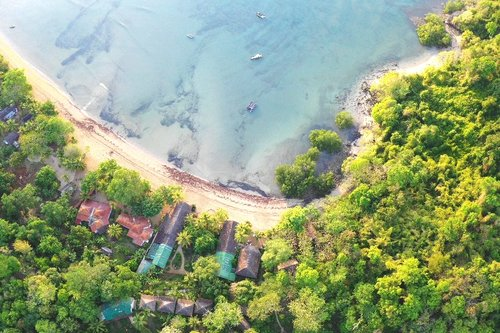
Day 13 & 14
Days spent relaxing.
Nosy Sakatia is a small island just off the west coast of Nosy Be offering unspoilt tropical fauna and flora. It is only 6.5 km long and 2 km wide at its widest point, and has a current population of only around 450 inhabitants. There are no roads and only foot paths, so people can wonder and explore its beauty and deserted beaches at their own leisure. The island is fringed by spectacular coral reef and is a great spot for snorkellers and divers.
Sakatia Lodge caters for up to 26 guests and has 4 large Ocean Bungalows with verandas, sea view, bathroom with shower and separate toilet. There are also 4 smaller Nature Bungalows, with en-suite bathroom with shower and toilet. For families, the lodge has one 2-bedroom Beachfront (Madiro) Bungalow, with veranda, two single beds and one double bed, bathroom shower and toilet. There is also 1 Beach Villa with three bedrooms, which is also ideal for families or groups. The food at the lodge is excellent and the hands-on owner, Jose Vieira, makes sure guests have a good stay. Diving and snorkelling are the big draw here, but other activities including game fishing, horse riding on Nosy Be, quad biking on Nosy Be, village trips, exploring Nosy Sakatia by Pirogue boat, and trips to Nosy Tanikely.
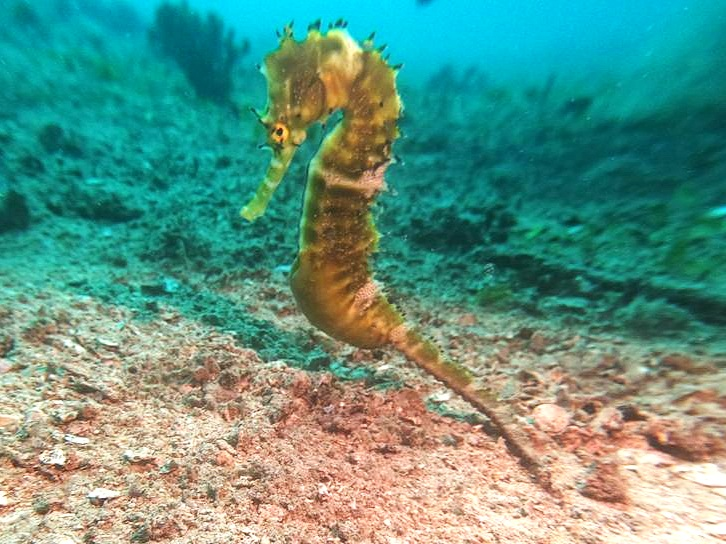
Day 15
Today you will transfer to the airport to check in for your Air Madagascar flight to Antananarivo. (schedule at present – MD321 – 15h10-16h45) . Upon arrival you will be met and transferred to Relais Des Plateaux to overnight in one double room on bed and breakfast basis.
Day 16
Today you will be transferred to the airport to check in early afternoon for your Kenya Airways to Nairobi before your onward flight home.
Internal Air Madagascar flights
Accommodation and meals as specified
Excursions and reserve entry permits as per itinerary
Transfers and transportation
The services of a professional English-speaking driver and guide in Antananarivo, Perinet and along the RN7.
Excludes:
Madagascar entry visa (currently no charge until further notice – subject to change)
All drinks and meals not specified
Travel insurance
Gratuities
Items of personal expenditure.
Pricing from £4,581.00 per person based on twin share for travel in late July 2022
Package does not include International Flights or any extensions or alternative accommodation suggested.
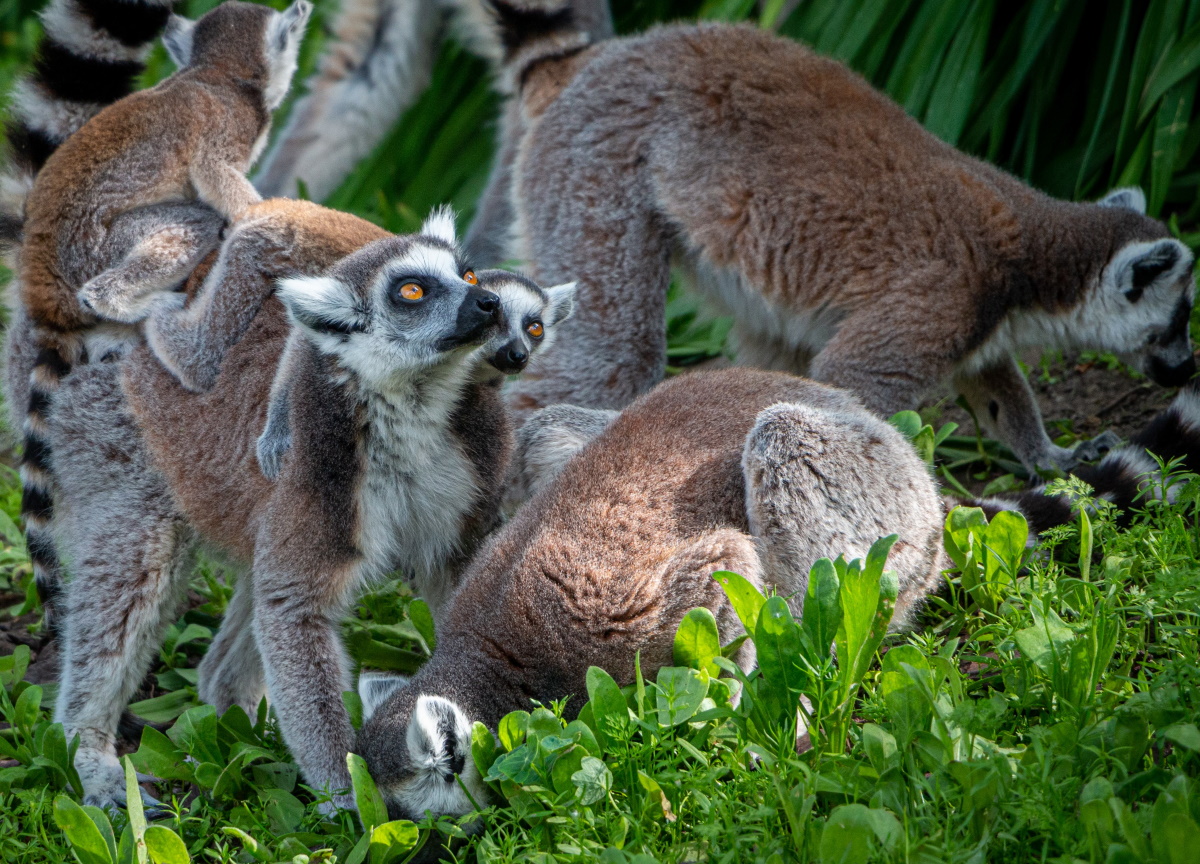
Facts About The Ring-Tailed Lemur
Endangered species
COMMON NAME: Ring-Tailed Lemur
SCIENTIFIC NAME: Lemur catta
TYPE: Mammal
DIET: Herbivore
GROUP NAME: Troop
AVERAGE LIFE SPAN IN THE WILD: Up to 18 years
SIZE: Head and body: 17.75 inches. Tail: 21.75 inches
WEIGHT: 5 to 7.5 pounds
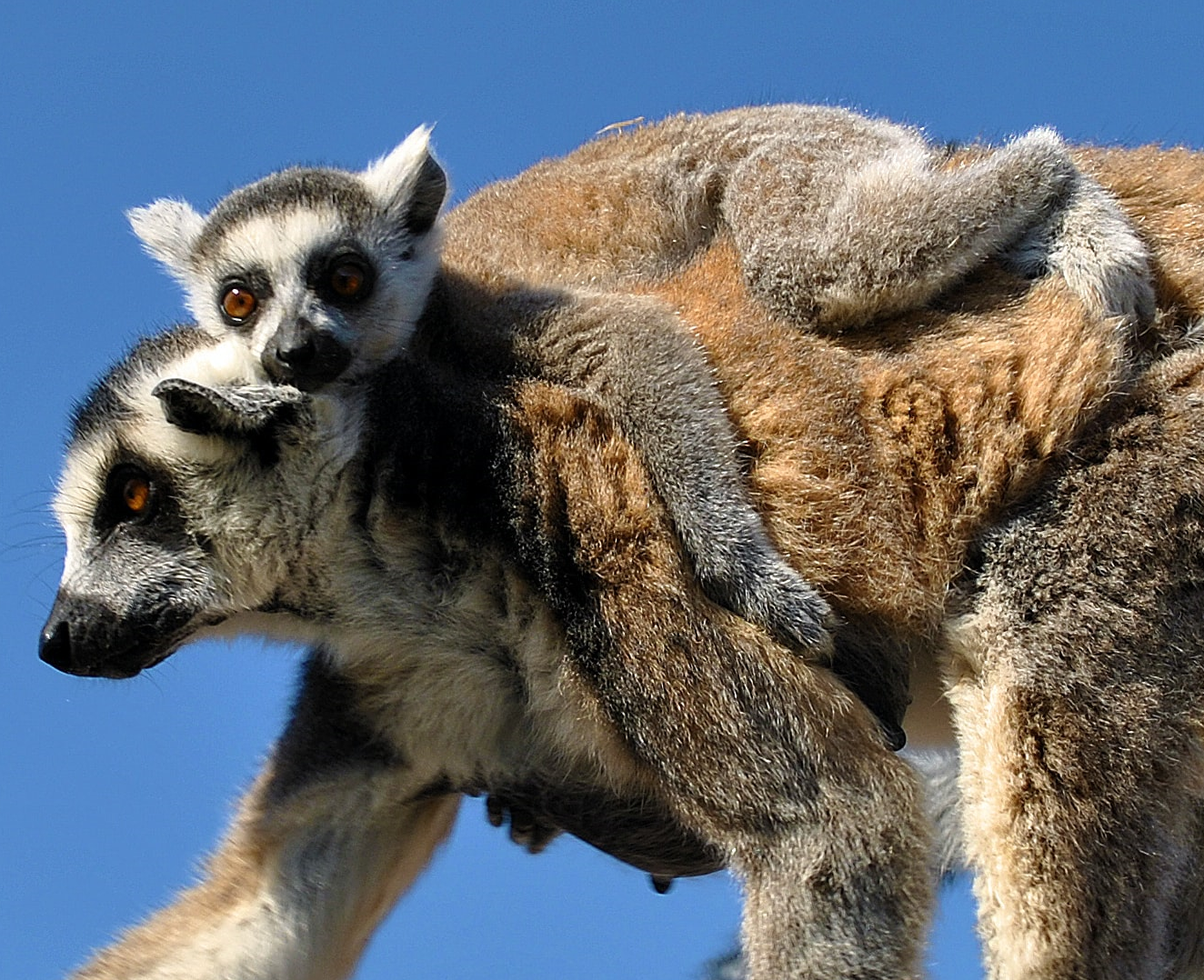
Madagascar Safaris
Madagascar is a true wildlife-lover’s paradise. It is the world’s 4th largest island and is situated 400km off the mainland of Africa. Madagascar is one of the most unique and iconic places on earth and having separated from the African mainland 165 million years ago, it has evolved into an astonishing mix of fascinating wildlife and amazingly varied landscapes.
Prepare to be spellbound as you explore the alien landscapes of Tsingy Rouge Park; bathe in the crystal-clear waters of Madagascar’s stunning Nosy Be beach; go in search of Lemurs in Ranomafana National Park or venture down ‘Avenue of the Baobabs’ and see the splendour and magic of these unique trees, which are centuries old.
A Madagascar safari holiday will take you on a strange and magical journey through time. You will venture through deep jungles that ring with the call of tropical birds, explore great mountains that erupt from the ground and relax upon gorgeous tropical sandy beaches made of pure white sand and of course be bowled over with the volume of wildlife you will see.
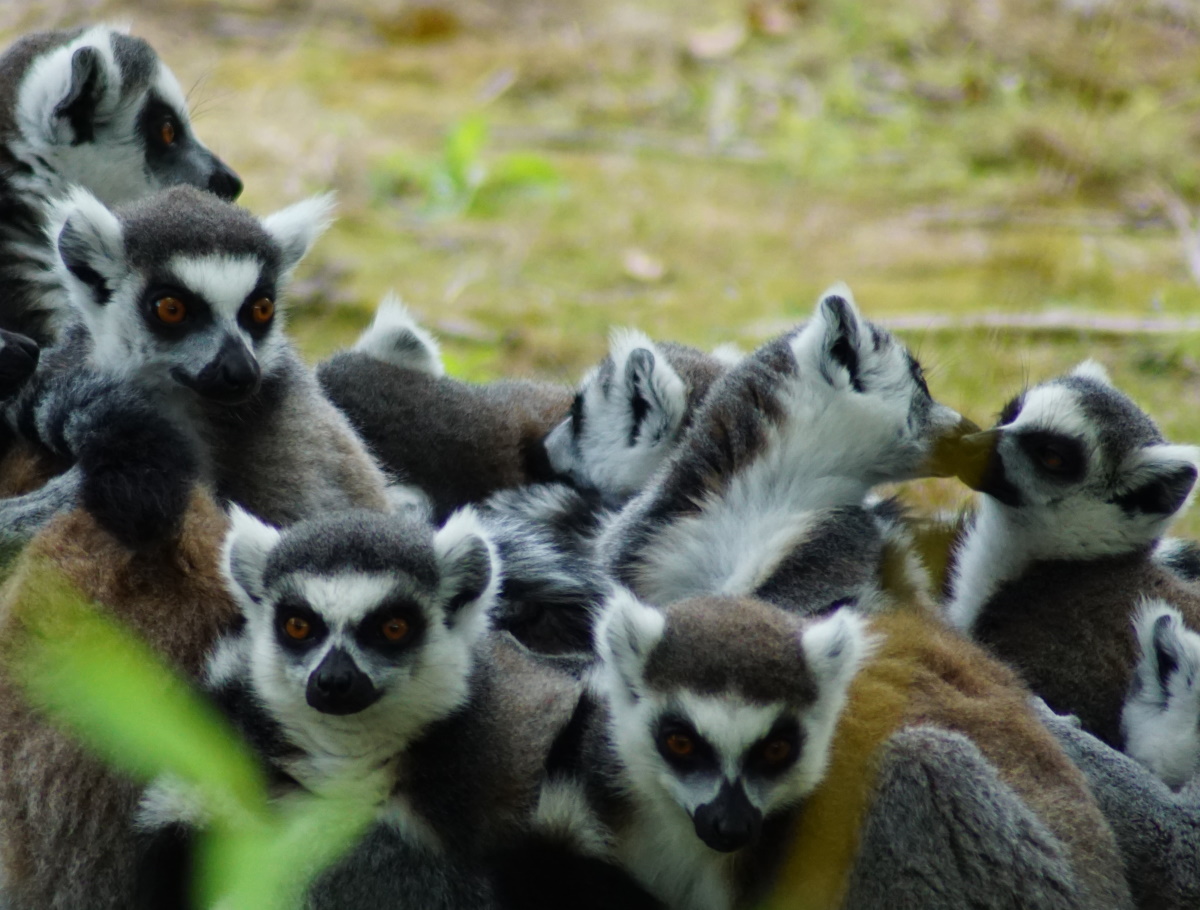
Wildlife In Madagascar
It’s hard to think of Madagascar without lemurs coming to mind and you’re not going to have a chance to see them in the wild anywhere else in the world. The island is a paradise for all kinds of wildlife as it is one of the most biodiverse places in the world in terms of variety and the level of endemic species – overall 93% of mammals, 98% of reptiles and amphibians, and 89% of the plants are unique to Madagascar! This diverse range of animals unique to the island has approx. 90 species of Lemur, the world’s smallest and largest Chameleons and Geckos, 300 species of birds, with over 100 types found nowhere else on the planet, 260 species of reptiles and hundreds of species of insects. Not forgetting the fascinating marine life such as manta rays, sharks, turtles and humpback whales that reach the island from mid-June through to October.
Madagascar boasts an incredible number of different lemur species, each of which is completely endemic. The most famous being the ring tailed and dancing sifaka as well as the indri whose calls awaken weary travellers with a rush of excitement. Perhaps a little less known is the eerie aye aye, with its intriguing looks, bulbous eyes and a very long finger. A safari to Madagascar in October could also bring you face to face with the endearing and wonderful baby ring tailed lemurs, which are a delight to see! It is recommended that when you take a safari in Madagascar, you explore the national parks on foot with your guide, because you get up close encounters and the best viewings of the lemurs in their natural environment.
With more than 90 lemur species formally recognised, here are a few common favourites:
Ring Tailed lemur
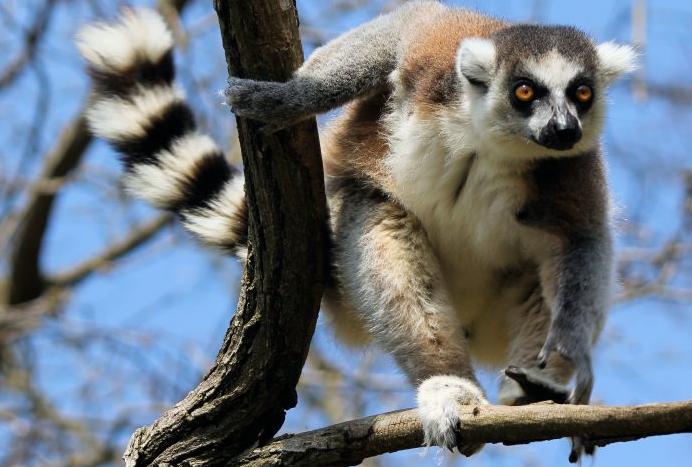
Easily recognisable by their banded tails and dark, mask like eyes, ring tailed lemurs inhabit dry scrub, deciduous and gallery forests in the south and southwest of the island. They live in groups of up to 20, mainly in Isalo, Andringitra and Andohahela National Parks and the Berenty Reserve.
Aye Aye
Despite being quite well spread, these eerie looking, solitary creatures are rarely seen. Covered in the black or dark brown fur, with white guard hairs around their neck, aye ayes have a bushy tail not dissimilar to a squirrel. They also have rodent-like teeth, round dish-like ears and beady luminous eyes. Their fingers are long and thin, the middle finger being up to three times longer than the rest to extract grubs from inside trees.
Black & White Ruffed lemur
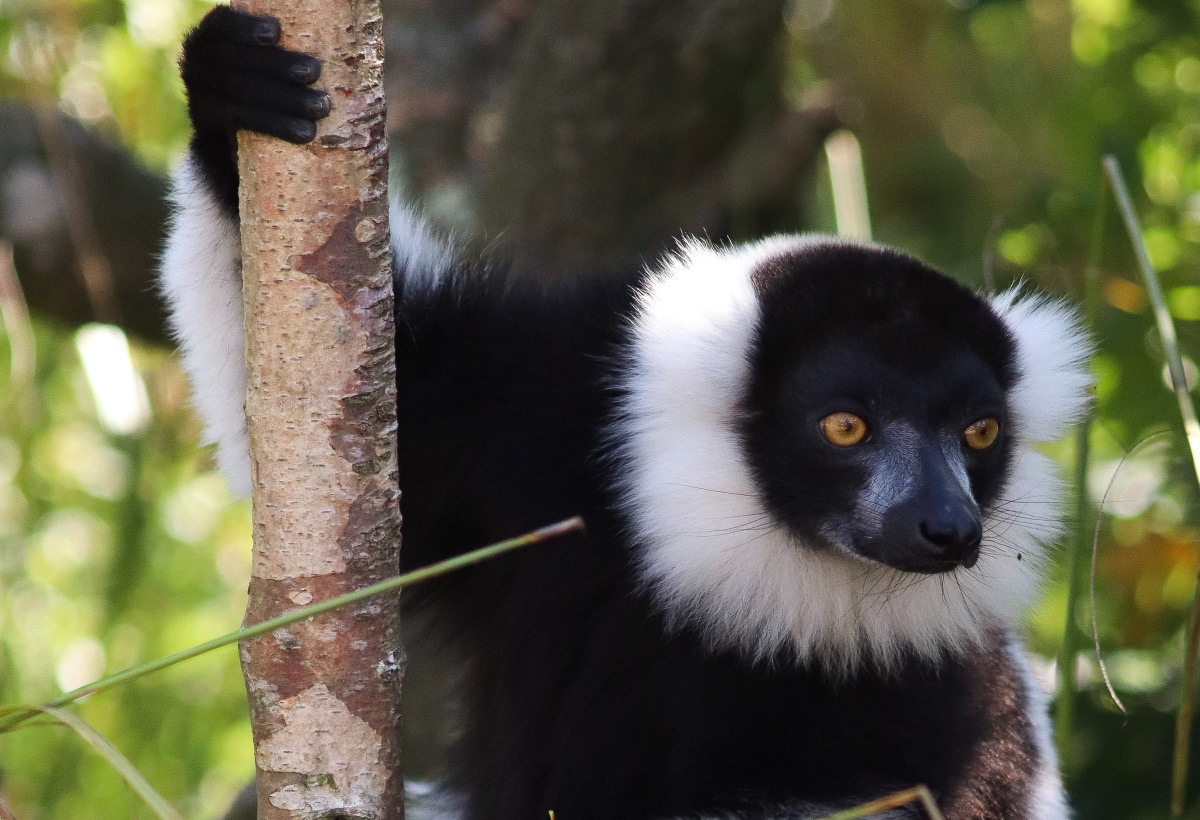
As its name suggests, the black and white ruffed lemur has black and white body fur. They are found on the East coast of Madagascan rainforests. They live for up to 20 years in the wild are one of the biggest primates living on Madagascar and has twelve different calls
Black Lemur
Males are all black and females have a brown back, a grey head, long white ear tufts and are white underneath. These lemurs have irregular bursts of activity during the night and inhabit forests in the northwest of the island of groups of about 7 – 10.
Sifaka Lemur
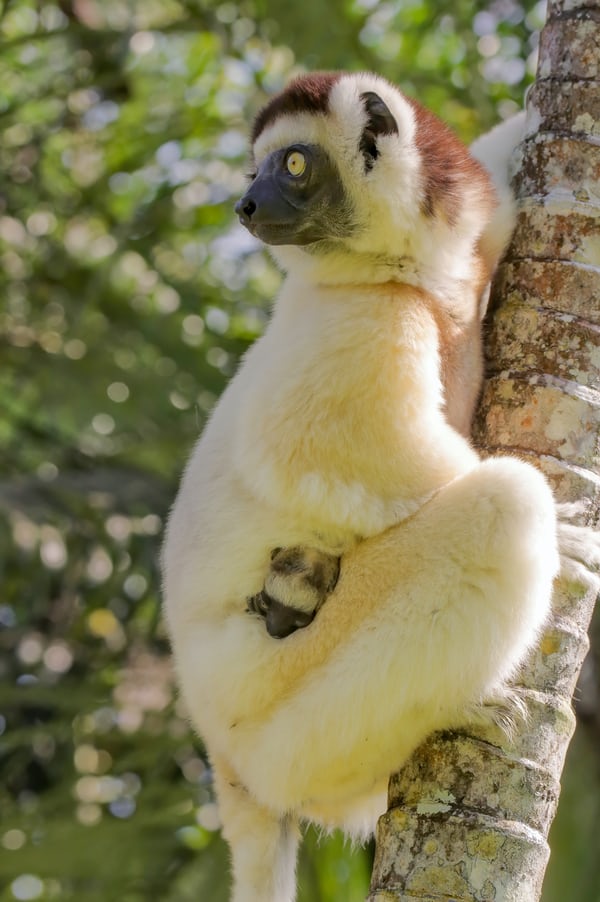
Found in the North west of Madagascar, Sifakas are about 1 metre (3.3 feet) long, roughly half the length being tail. They have a small head, large eyes, and are usually white with darker markings. Sifakas remain upright, and they leap quickly from tree to tree by jumping with their powerful hind legs and they clear distances of over 30 feet.
Verreaux’s Sifaka
Also known as white sifakas. Despite being tree-dwellers they cross the ground occasionally, which is perhaps what they are most famous for. They stand on their long back legs, their forearms above their head for balance and have the appearance of dancing as they jump across the forest floor. These lemurs are found in the south and west of the island, they share their territory with ring tailed lemurs.
Indri
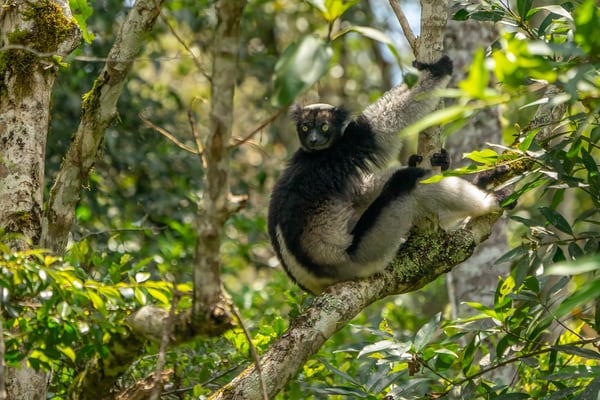
These are the largest of the lemurs, known for their strange wailing song and teddy bear like appearance. Indris inhabit the rainforests of eastern Andasibe National Park.
Bamboo Lemur
The most common of these species is the grey bamboo lemur, which can be seen is several of the eastern parks. The golden bamboo lemur, however, is much rarer and mainly seen in Ranomafana National Park They live in small groups of up to four and feed mainly on bamboo.
Red Ruffed lemur
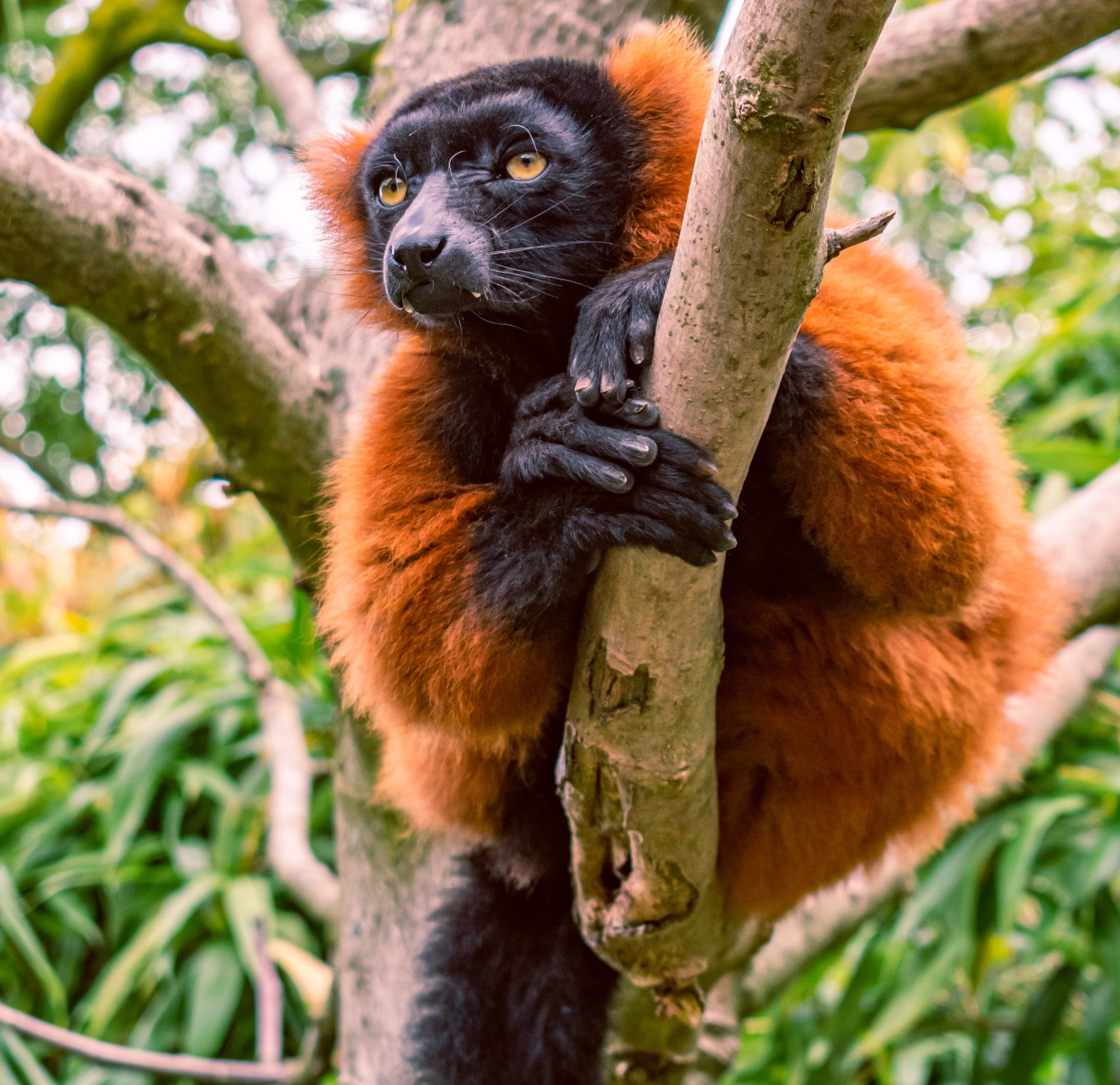
One of the largest primates in Madagascar, these lemurs are restricted to Masoala Peninsula in the northeast. Weighting between 3.5 and 4 kg, they are characterised mainly by their rusty red coloured ruff and body, and black stomach, tail, feet and inside of the legs. They also have a white patch on the backs of their necks and may have white markings on their feet or mouths.
Mouse Lemur
These nimble creatures are the smallest of the primates. This abundant species can be found throughout Madagascar and most easily seen in Ranomafana and Andasibe National Parks as well as the Berenty Reserve.
So, whether you are in search of the cheeky dancing ring-tailed lemur, the eerie looking aye aye or one of the other incredible species of lemur, don’t forget there’s plenty of other wildlife too: from the colourful, camouflaged chameleons, bizarre insects to the eerie-looking fossa. Madagascar is a nature lover’s paradise, that’s for sure and there’s definitely enough to keep even the biggest wildlife lover occupied!
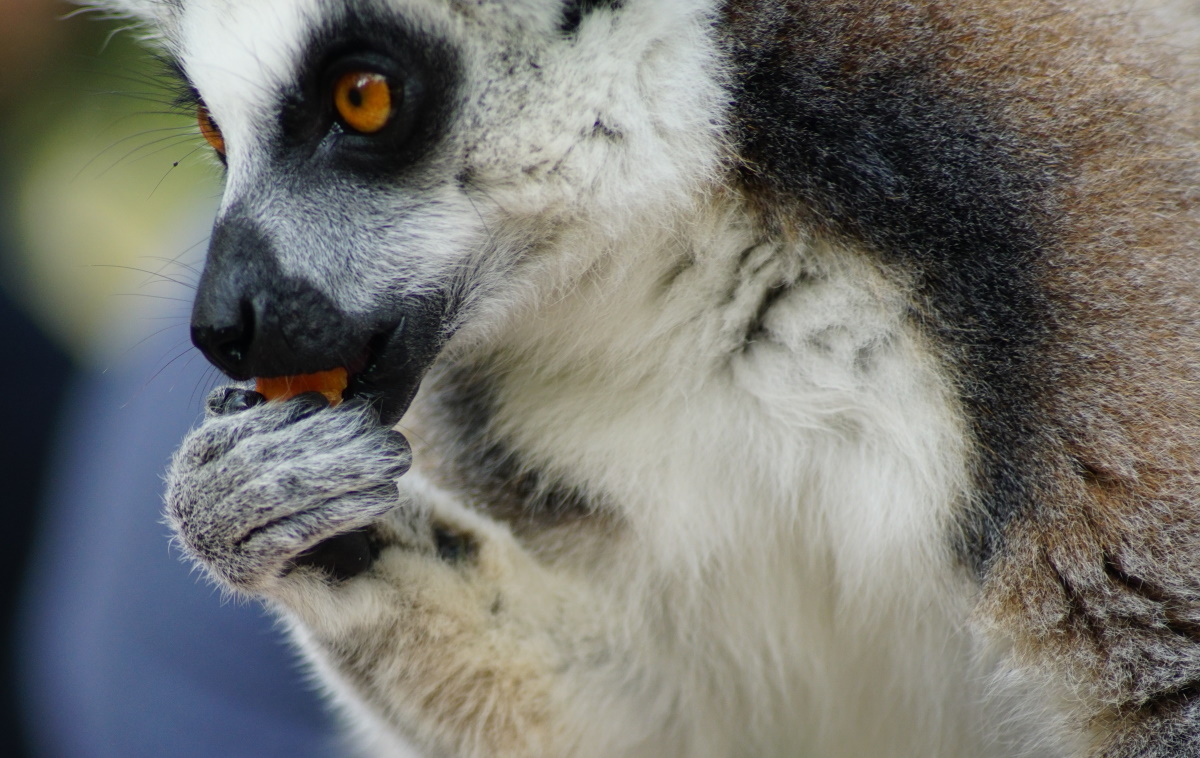
Best time to visit Madagascar
Madagascar can be visited most of the year, but the best time is May-November, while mid- December to mid-March is best avoided due to the rainy season. However, specific areas can be better at different times of year.
Why We Love Madagascar
Madagascar is perfect for the Wildlife enthusiast, honeymooners, families, solo travellers, beach lovers and hikers…
Madagascar really does have something to suit everyone! It’s hard to think of Madagascar without lemurs coming to mind as they are the country’s most famous resident after all. But the island is a bona fide paradise for all kinds of wildlife. This includes hundreds of birds, reptiles and insects as other mammals such as humpback whales – certainly enough to keep the biggest wildlife lover occupied!
Madagascar is the world’s fourth largest island and is a vast magical land just waiting to be discovered, from semi-arid deserts palm to forest-fringed beaches, volcanoes and grassy plateaus to limestone pinnacles. Much of its rich flora and fauna is found nowhere else on earth and the former French colony offers a beguiling range of things to see and do as well as many areas to be explored. It is home to almost 15,000 plant species as well as countless shrubs and trees. There are 860 species or orchids (650 of which are indigenous), as well as the world’s eight Boabab species and 165 species of palm trees.
Madagascar’s beaches are the undiscovered secrets of the Indian Ocean. Choose between Nosy Be and one of the northern islands, Ile Sainte Marie or the southern beaches near Ifaty or Fort Dauphin. All have miles of unspoilt palm-lined beaches, with no high-rise resort hotels spoiling the landscape, great water sport experiences and some of the best seafood around.
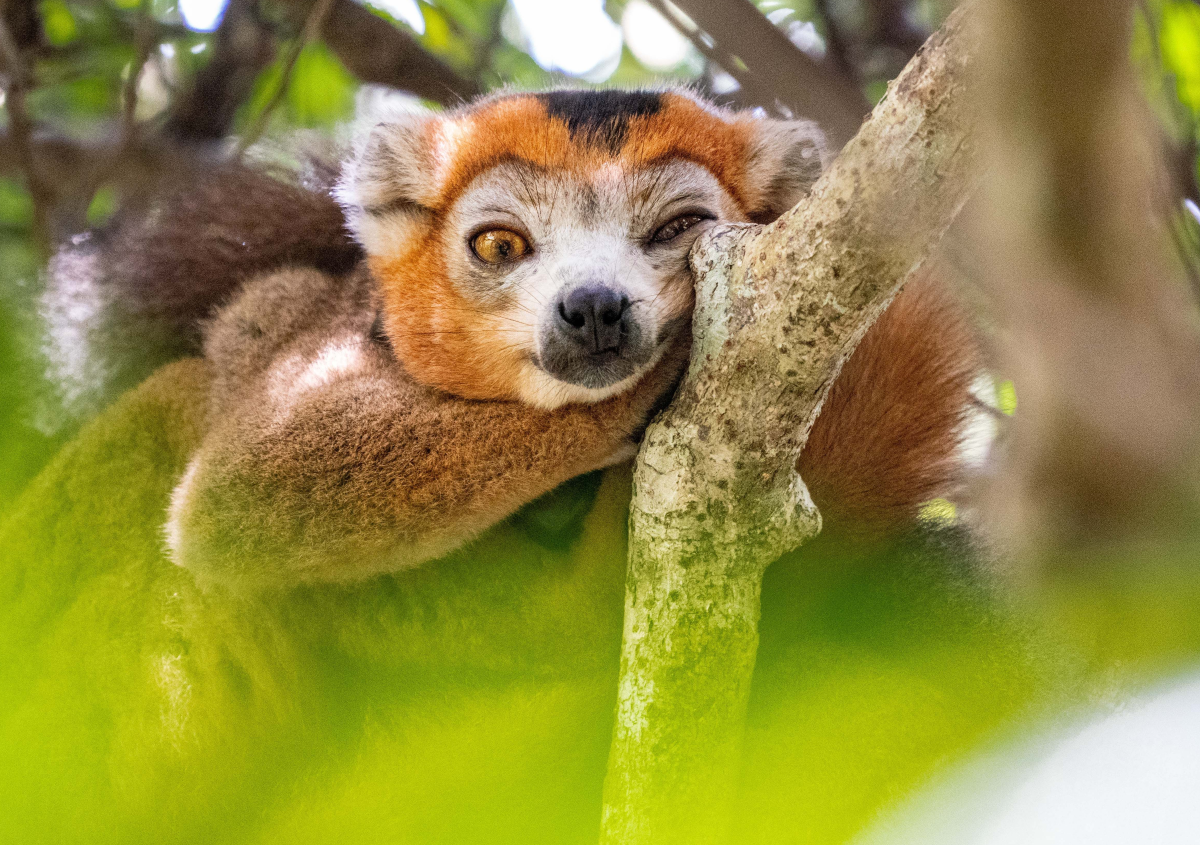
Madagascar, a former French colony and a melting pot of diverse cultures and traditions. With a combination of more than 18 different ethnic groups, the Malagasy culture is a mix of African, Arab and Indian origin with some of the friendliest locals in all of Africa. Malagasy is the local language, but French is the second language – we always arrange English speaking guides when booking with Wildlife Escapes.
Planning a holiday to Madagascar is always an enjoyable challenge. We are all looking to see and do different things when we travel and each region of the island offers something quite unique. It would probably take almost a year to explore the island fully as the distances are too great and the infrastructure simply too poor to nip from one end to the other. There’s just no way to tick all the boxes on a two – or even three – week long holiday. So, at Wildlife Escapes we suggest the most enjoyable way to experience this wonderful destination is – with our guidance – to concentrate on one region at a time!
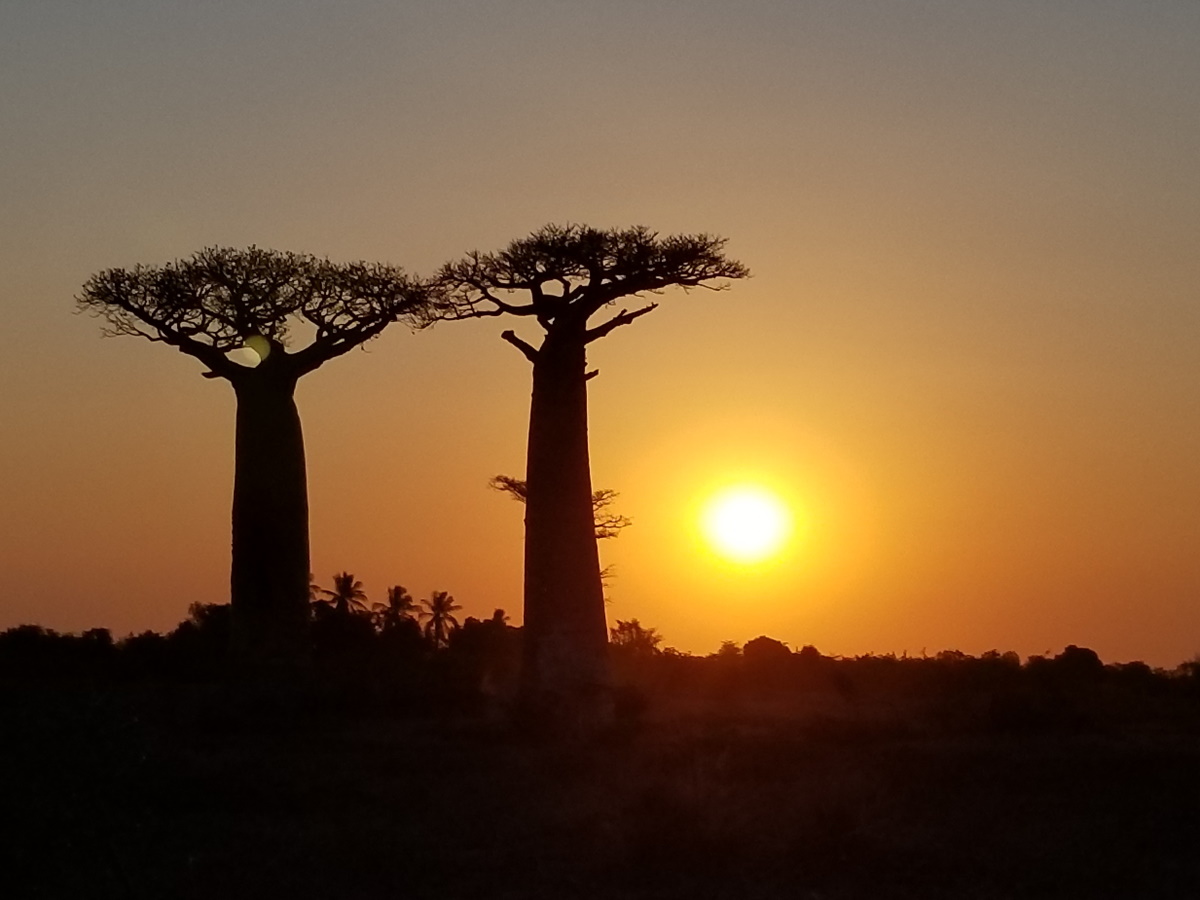
The National Parks of Madagascar
THE NORTH
The North of Madagascar is wonderfully varied and allows people to see a huge diversity of scenery and wildlife in relatively short distances. The main town in the North, Diego-Suarez (Antsiranana), is the starting point before travelling south to reach the rainforest of Montagne D’Ambre National Park which is one of the most visitor friendly places on the island. A further few hours south you will find Ankarana National Park which is made up of dry deciduous forest, labyrinths of caves and, most famous of all, the limestone ‘tsingy’ formations. After taking in these national parks, most will finish up on one the many islands spread along the northwest coastline. These offer idyllic beaches, good diving, snorkeling and many watersports including fishing and sailing. At certain times of the year, you can see dolphins, whales, manta rays, turtles and whale sharks.
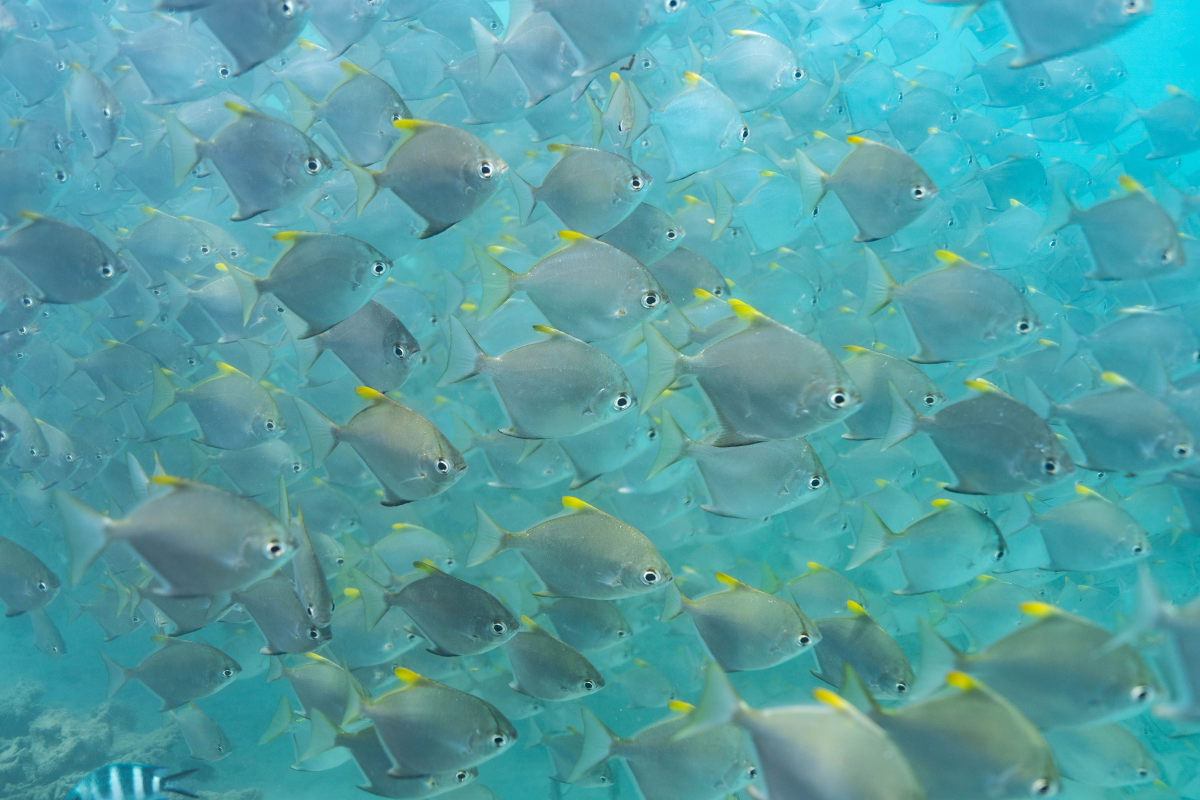
Montagne D’Ambre National Park
Montagne D’Ambre National Park is 35 kilometres south of Diego-Suarez and is a unique mix of volcanic massif and lush montane rainforest. This is one of the most visitor friendly parks in Madagascar with over 30 kilometres of paths. Walks times vary from one to six hours taking in lakes, waterfalls, spectacular trees and many rivers that run through the park. The wildlife here is superb, with seven lemur species in the park including the habituated crowned and Sandford’s brown lemur – two of the highlights. There are around 75 species of bird, 20 amphibian species, the ringtailed mongoose are often spotted and if your luck you may get a glimpse of the fosa! The tiny brookesia chameleons, many frogs and butterflies make for a wonderfully diverse day or two exploring this park and day trips to the red tsingy and sacred lakes are worth doing.
Ankarana National Park
80 kilometres south of Diego-Suarez lies is Ankarana National Park. Ankarana is 5km by 20km in size – a large and hugely impressive area of limestone pinnacles, outlying dry deciduous forest, underground caves and canyons full of stalactites and stalagmites. These caves are home to bats (some of the smallest and largest in the world) and a small population of underground crocodiles. Above ground the park is not only hugely scenically impressive but is also host to 11 types of lemur including the crowned lemur and Sandford’s brown lemur. There is also a plethora of frogs and reptiles, and nearly 100 species of birds.
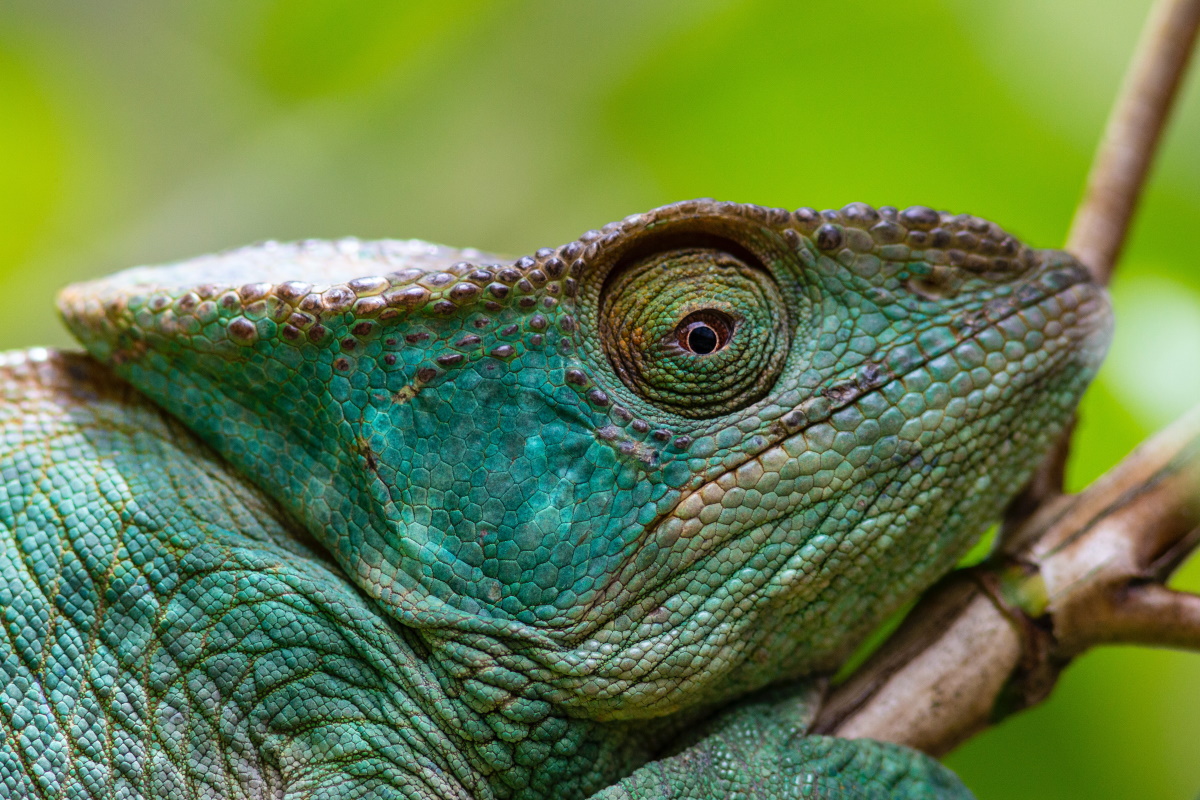
THE EAST
The eastern part of Madagascar is home to the most accessible national park. It is one of the most challenging areas of the country, but certainly worth the time (at least a few nights) money and effort to get there. The real draw for most people in the east is Andasibe-Mantadia National Park (also known as Perinet), which is only a 3hour drive from the capital. This is probably one of the most is one of the most popular areas for visitors in the whole of the country due to its accessibility, expert guides and abundant wildlife.
Further north on the east coast are the spectacular rainforests of Masoala and Marojejy. Masoala is also home to Aye-Aye Island and the Nosy Mangabe Special Reserve. South of Antananarivo and along the RN7 is the mid-altitude rainforest of Ranomafana National Park which is rich with wildlife including 12 different species of lemur. The coastline of Il St Marie is beautiful with miles of sandy beaches and reef-protected coves and bays and home to migrating whales in July-September.
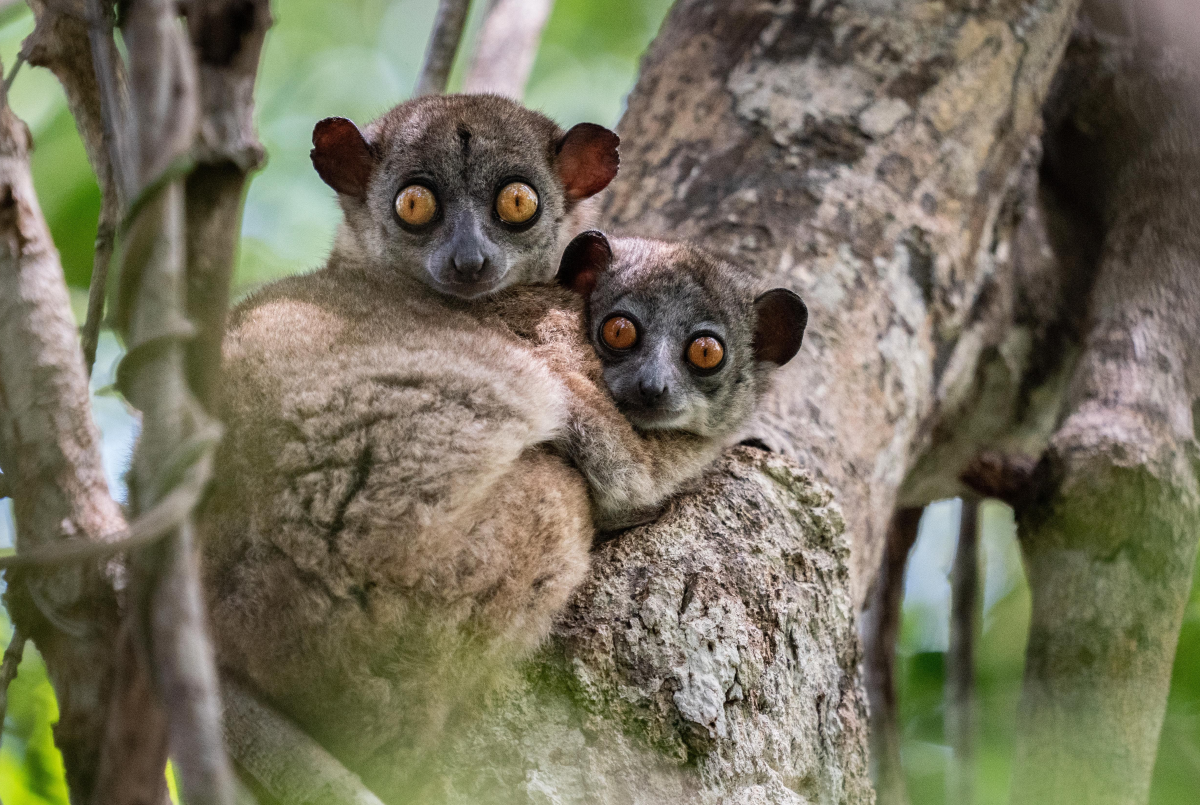
Andasibe National Park
Andasibe National Park is home to 11 species of lemur and a wide variety of frogs, spiders, boas and chameleons. However, the main attraction for most visitors is the Indri – the largest all lemurs – and well known for its ‘singing’ voice – an eerie, wailing call that can carry several kilometres.
Mantadia National Park
Mantadia National Park lies 20 kilometres to the north of Andasibe and the terrain is harder with fewer trails, however, a visit here is hugely rewarding as the forest is virtually untouched and offers many different species.
Ranomafana
Ranomafana is a mid-altitude rainforest in the south-eastern part of the island, around 400 kilometres south of Antananarivo and a 7-hour journey by road. The park is extremely rich in wildlife and home to a wide variety of rare and endemic plant species. It claims over 100 species of birds along with many butterflies, chameleons, geckos and insects. Visitors are attracted by its 12 species of Lemur – Milne-Edwards sifaka, black and white ruffed lemur, three species of bamboo lemur, red-fronted brown lemur, red-bellied lemur, and more often at night the woolly lemur, sportive lemur, greater dwarf lemur, mouse lemur and, if lucky, the aye-aye.
Worth a 2 or 3 night stop here and you need a good level of fitness because many of the trails are steep and can be slippery, as it does get a fair amount of rain here.
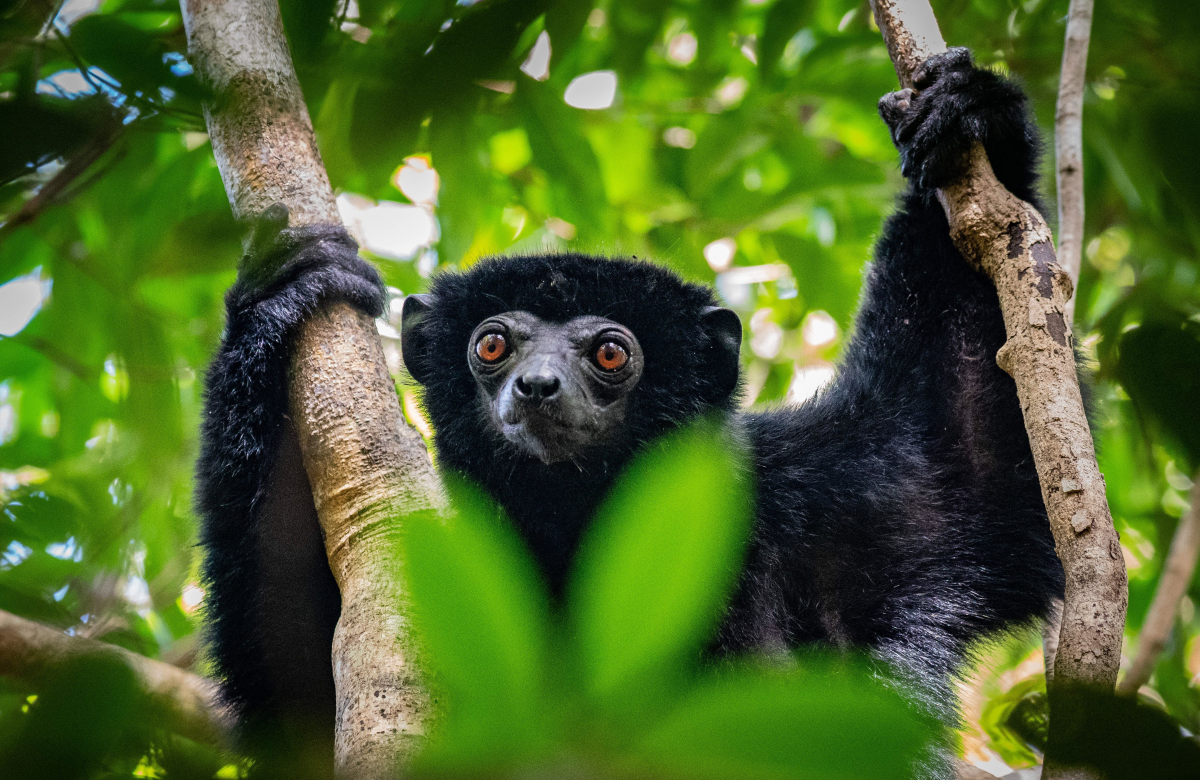
Masoala
Masoala is the largest protected area in the country and is a two hour boat journey from the town of Maroansetra. The park is home to extraordinary biodiversity and now recognised as a World Heritage site. Its spectacular landscape encompasses rainforest, coastal forest, mangroves, marsh and beautiful beaches. It is the only place to see the red-ruffed lemur and boasts 9 other types of lemur along with fosa, mongoose, various chameleons, geckos and frogs. It is also a birder’s paradise and, from June-September, humpback whales are often seen in the Bay of Antongil.
Marojejy
Marojejy is one of the most pristine rainforest areas left in the country and is an area of truly remote wilderness. Its landscape is made up of imposing mountains, rocky outcrops, cliffs and lush rainforests full of wildlife.
The park is the best place in Madagascar to see the silky sifaka, one of the world’s most endangered primates, and also the iconic bird, the helmet vanga. The flora and fauna here is staggeringly diverse. Trips here must be carefully planned and does require people to be reasonably fit due to the heat and arduous nature of the treks – the best times to visit are April-May and September-December when there is less rain.
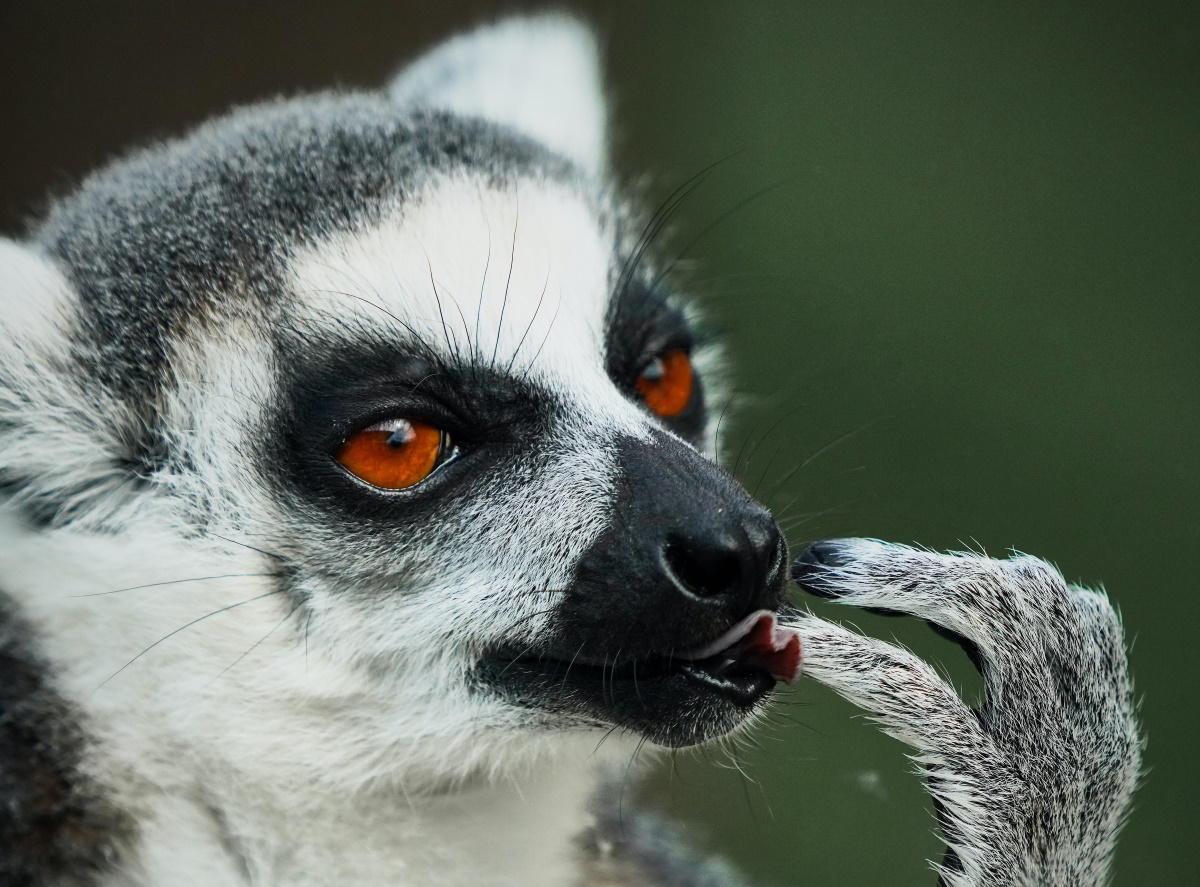
THE SOUTH
The south and south-eastern region has some fantastic areas for wildlife viewing, superb scenery and remote off the beaten track beaches. Here you will find Berenty Reserve which is home to large troops of resident ring-tailed lemurs and the ‘dancing’ verreaux sifakas. The areas of the Ifotaka community forest (gallery forest and spiny forest), Andohahela National Park (rainforest, spiny forest and transition forest) and the Mandena Conservation Zone (littoral and spiny forest) are far less visited areas of Madagascar but well worth a trip. As well as this you can explore the spectacular rock formations and diverse scenery of the Isalo National Park and the beaches and spiny forest of Ifaty. All of which are accessed from the main town of the south – Fort Dauphin – and via the RN7 highway.
Berenty Reserve
Berenty Reserve is a three- to four-hour drive from Fort Dauphin and home to the ring-tailed lemur, the ‘dancing’ sifaka lemur and brown lemur, all of which are pretty much guaranteed sightings at close quarters. There are also several other species seen in the reserve. The trails here are flat and easy, and a dusk walk to the spiny forest area is rewarding to see mouse lemurs and giant octopus trees. Birding in Berenty is good with over 100 species recorded and there is also a wide variety of lizards, snakes and chameleons. Several types of tortoise are also found in the reserve.
Ifotaka Community Forest
Ifotaka is a community ecotourism project and home to Mandrare River Camp. It is 110kms from Fort Dauphin and is a fantastic place to spend a few nights in luxury tents. The local Antandroy people allow for building, wood cutting, and cattle grazing in certain areas whilst maintaining environmentally important and sacred areas for ecotourism. From April to November, walks exploring the sacred gallery forest and spiny forest can be organised. You are most likely come across Verreaux’s sifakas, ringtailed lemurs and an abundance of reptiles and bird life. The baobabs of this region are hugely impressive, along with the fascinating interaction with the local community and learning about their culture and beliefs.
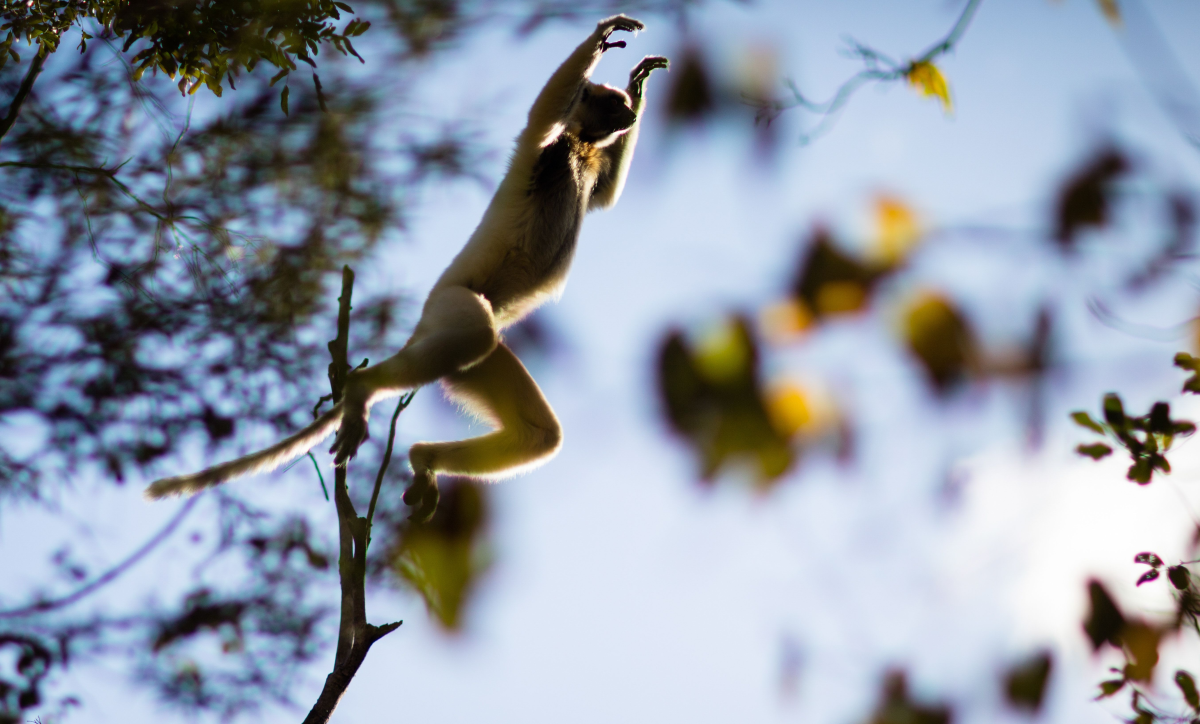
Ifaty
An hour and a half north of Tulear (at the southern end of the RN7 highway) is Ifaty, which offers sea, sand, snorkelling, birdlife and also baobabs. The main attractions on the beach include diving, snorkelling and visiting local turtle breeding and conservation programmes. The Reniala forest protects spiny forest and offers 1-2 hour trails which are rewarding for birders and those wishing to see baobabs as it has over 1,000 of them, some being 12m in circumference and over 1,200 years old.
Isalo National Park
Isalo National Park is a quite remarkable national park located 4 hours north along the RN7 highway. It has spectacular sandstone rock formations, rare endemic plants and diverse landscapes, making it an extremely popular choice to visit. The park is a superb option if you like walking and hiking, although due to the terrain and hot weather (rain is virtually unknown from June-September), walks should not be taken lightly. The trails are often rewarded with a cool dip or shower in various deep pools or waterfalls. Short walks of around an hour or multi day treks are all possible. Isalo is also a sacred area for the local Bara tribe and the caves there have been often used as burial sites. Isalo has some wonderful wildlife with sifakas, brown lemurs and ringtails all present. There are also over 80 bird species and many reptiles and frogs.
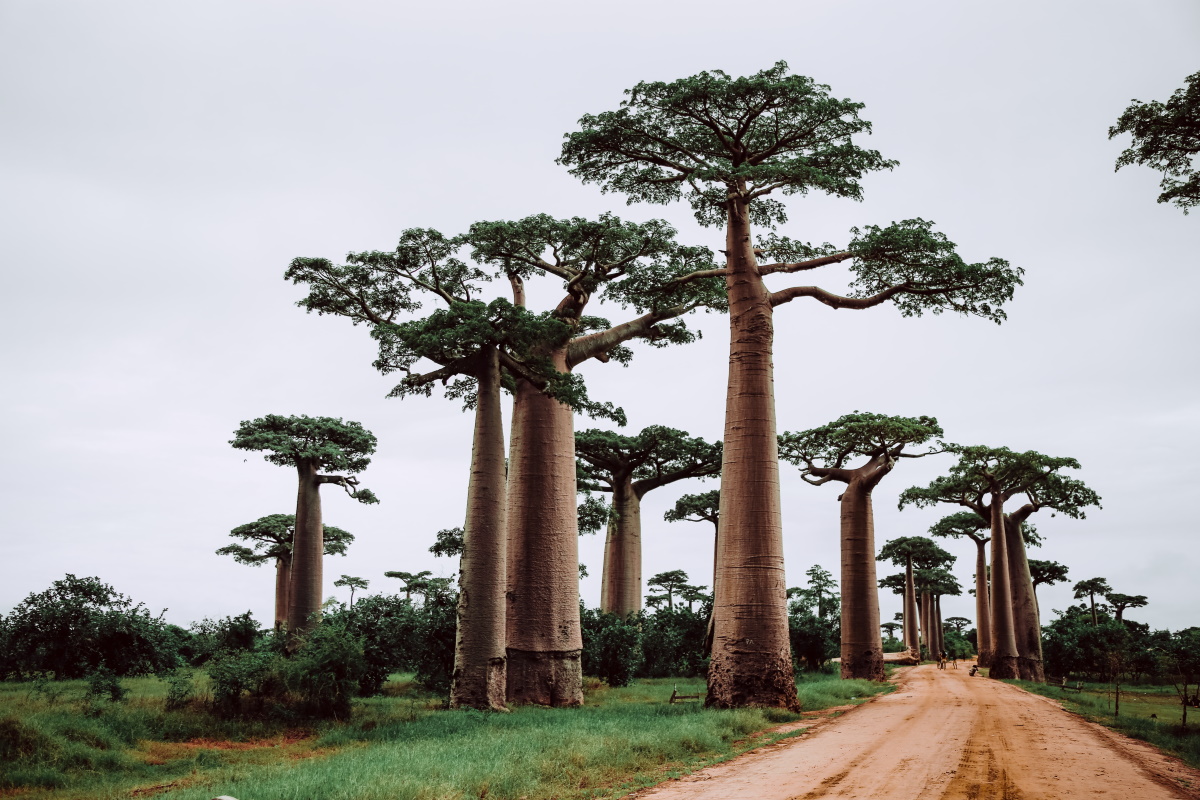
THE WEST
The remote west is vast and has some fantastic parks and reserves only accessible to those more dedicated travellers. Travel by road and by air from Antanananarivo to either the towns of Morondava or Mahajanga. From here visitors can get great wildlife viewing at Ankaranfantsika, Kirindy to see the largest area of Tsingy limestone formations and best Baobabs. This area has a mainly dry climate, areas of deciduous forest and beautiful beaches with some of the most remote and luxurious fly-in hotels on the island – great places to combine both wildlife and relaxation.
Anjajavy reserve
Anjajavy reserve is a tropical, dry deciduous forest where wildlife viewing is effortless. You should come across a variety of lemurs including sifaka, common brown lemurs, mouse lemurs and sportive lemurs. There is also a variety of birdlife, snakes and chameleons – including the largest, the two-and-a-half-foot long Oustalets. Anjajavy also has many baobab and cycad trees, caves and tsingy to explore on trails that can last from 2 hours to all-day walks. With so much to see and do we recommend anything from a few days to several weeks here.
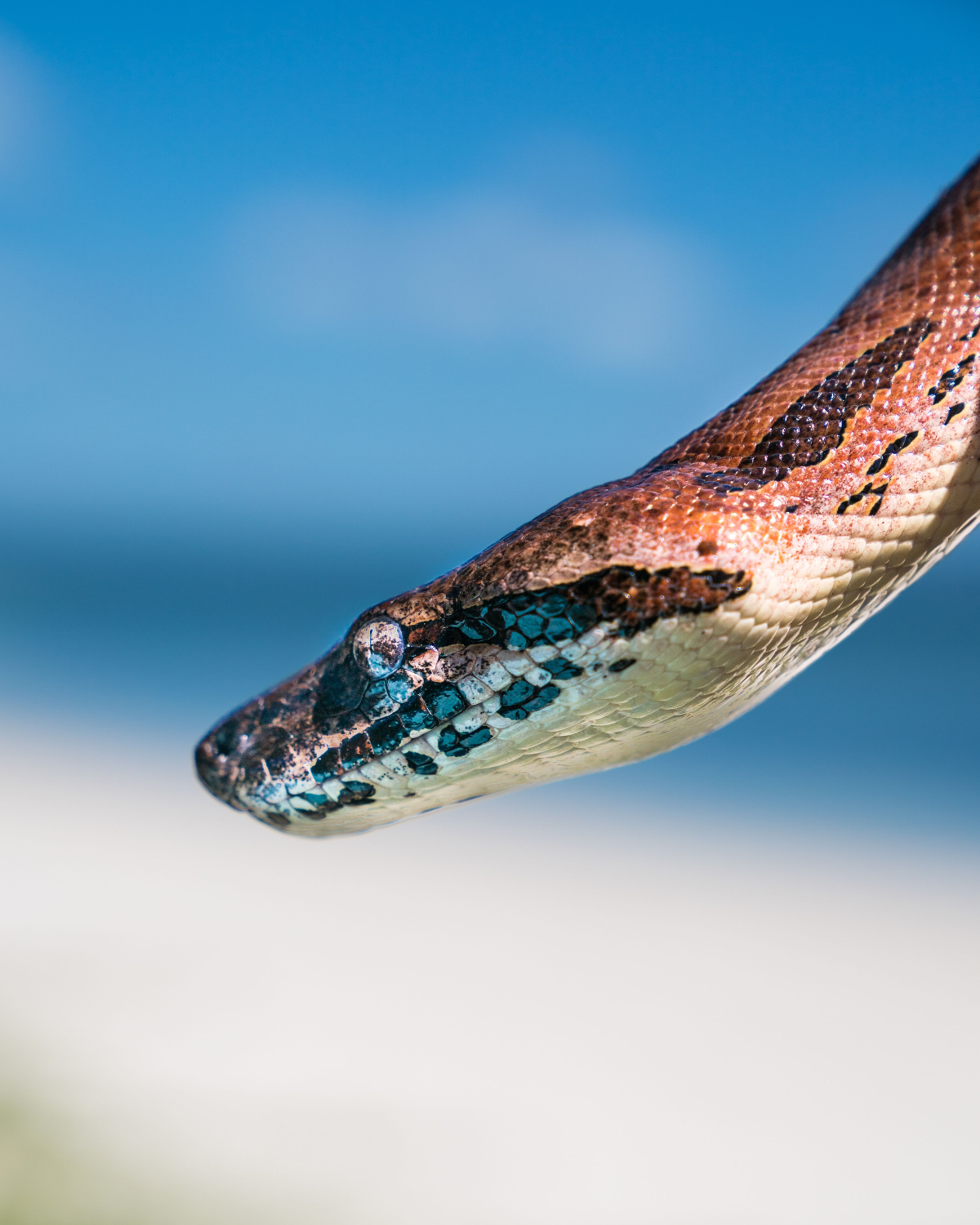
Ankaranfantsika
Ankaranfantsika is around a 2-hour drive away from Mahajanga. This area of dry deciduous forest is a superb place for wildlife. There are 130 bird species, including the Madagascar fish eagle, 8 types of lemur, including the western wooley lemur, sportive lemur, mongoose lemur, and is the only place to see the golden-brown mouse lemur. There are also many types of reptile and it’s possible to see crocodile in Lake Ravelobe in the northern part of the park.
Kirindy
Morondava is the gateway to Kirindy and the many attractions in this part of the west, including the well-known Baobab Avenue and the Tsingy de Bemaraha and Kirindy Reserve. Kirindy really is one of the most rewarding wildlife areas in the country with so many different species on offer. It is the best area to find the fosa – Madagascar’s largest predator – and it is also home to the tiniest of lemurs, and the world’s smallest primate, the Madame Berthe’s mouse lemur, which weighs just 30g. It is also home to the giant jumping rat, collared iguanas, narrow-stripped mongoose and various birds, reptiles and amphibians.
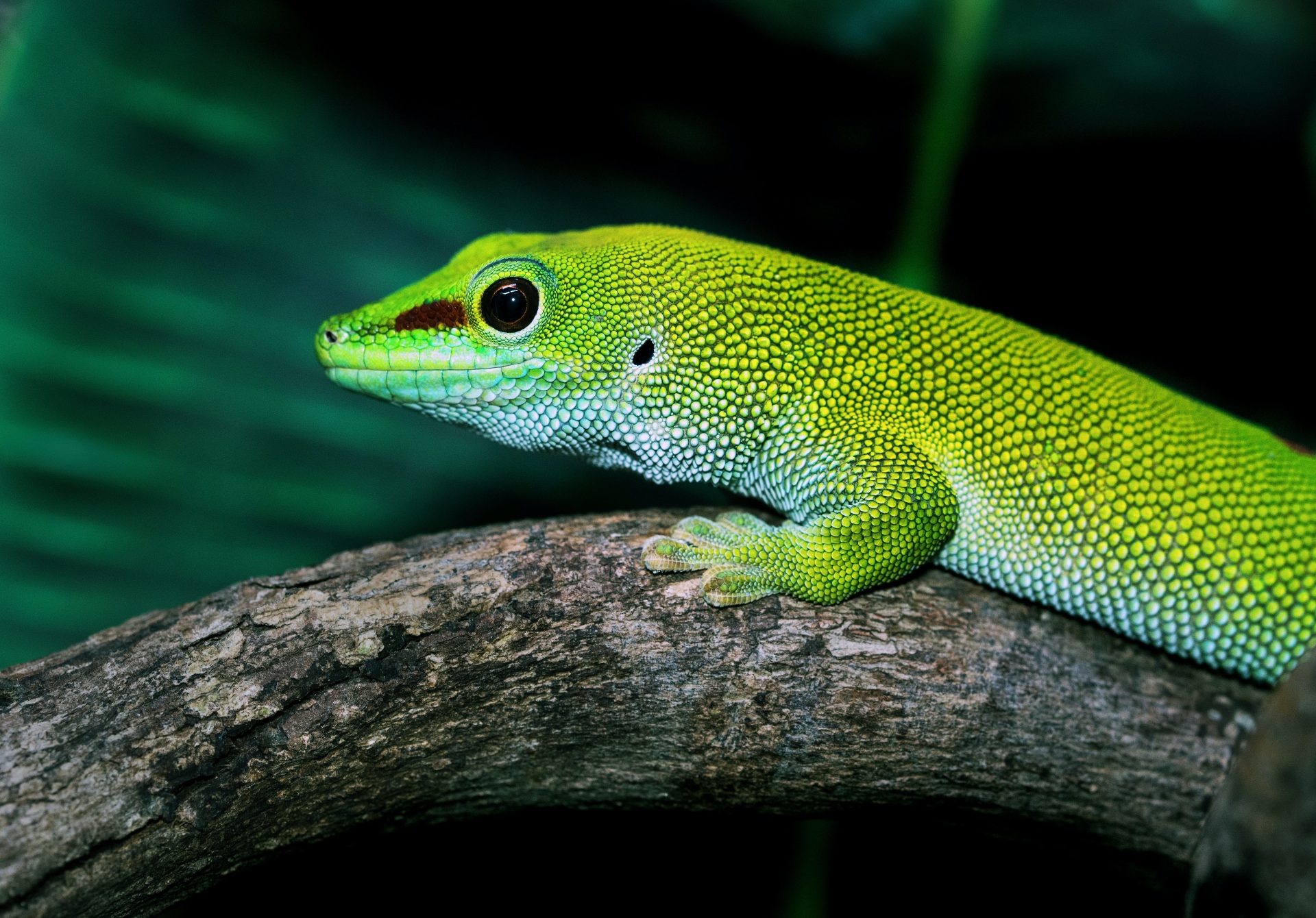
Madagascar Top Tips
• A trip must be well planned and it is important to use guides who we know and trust.
• It is a vast country with difficult geography and frail infrastructure, so a relaxed and patient attitude is needed.
• Accommodation can be more moderate and rustic compared to other African countries.
• Most people will spend between ten days to three weeks on the island, combining two or three locations.
• For a two-week trip visiting a couple of wildlife areas and some time on the beach, approx £4,000 per person is needed (including international flights).
• Do not try and do too much. It is important to discuss and focus on the areas of interest as you can’t see everything!
• It is very different to mainland Africa. As there are not any dangerous animals, visitors will normally explore parks on foot with a guide.
• An overnight stay at Masoala means you have more of a chance to spot the elusive aye-aye.
• Nosy Mangabe Special Reserve in Antongil Bay is worth a day trip or overnight stop.
• Swimming with turtles is possible and often dolphins are often seen in Antongil bay.
• It is a country unlike anywhere else and people will leave amazed!

